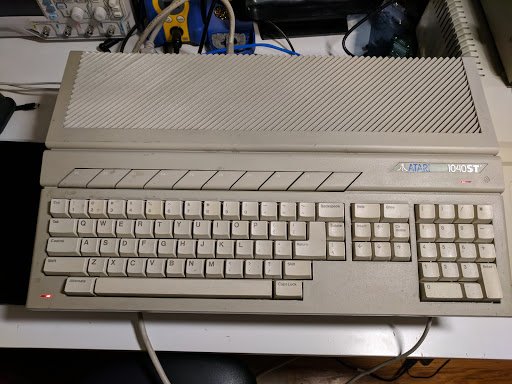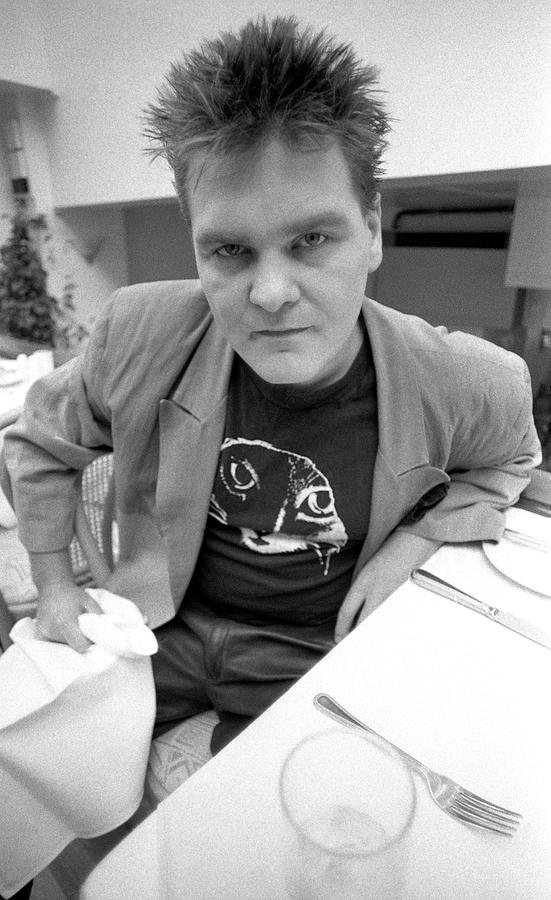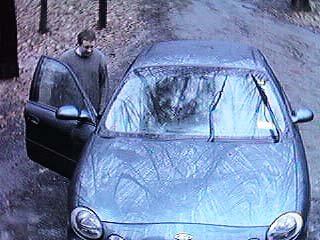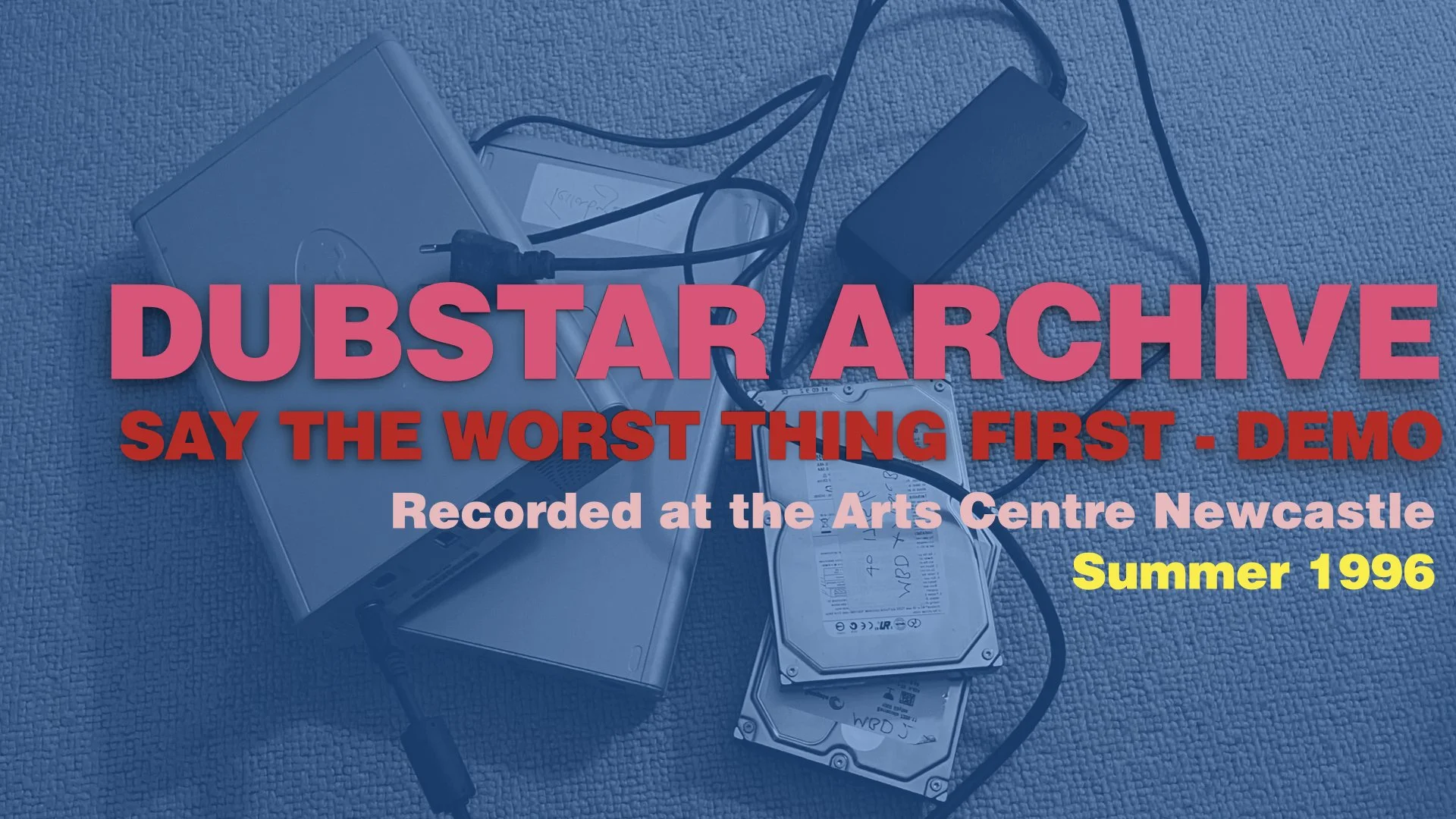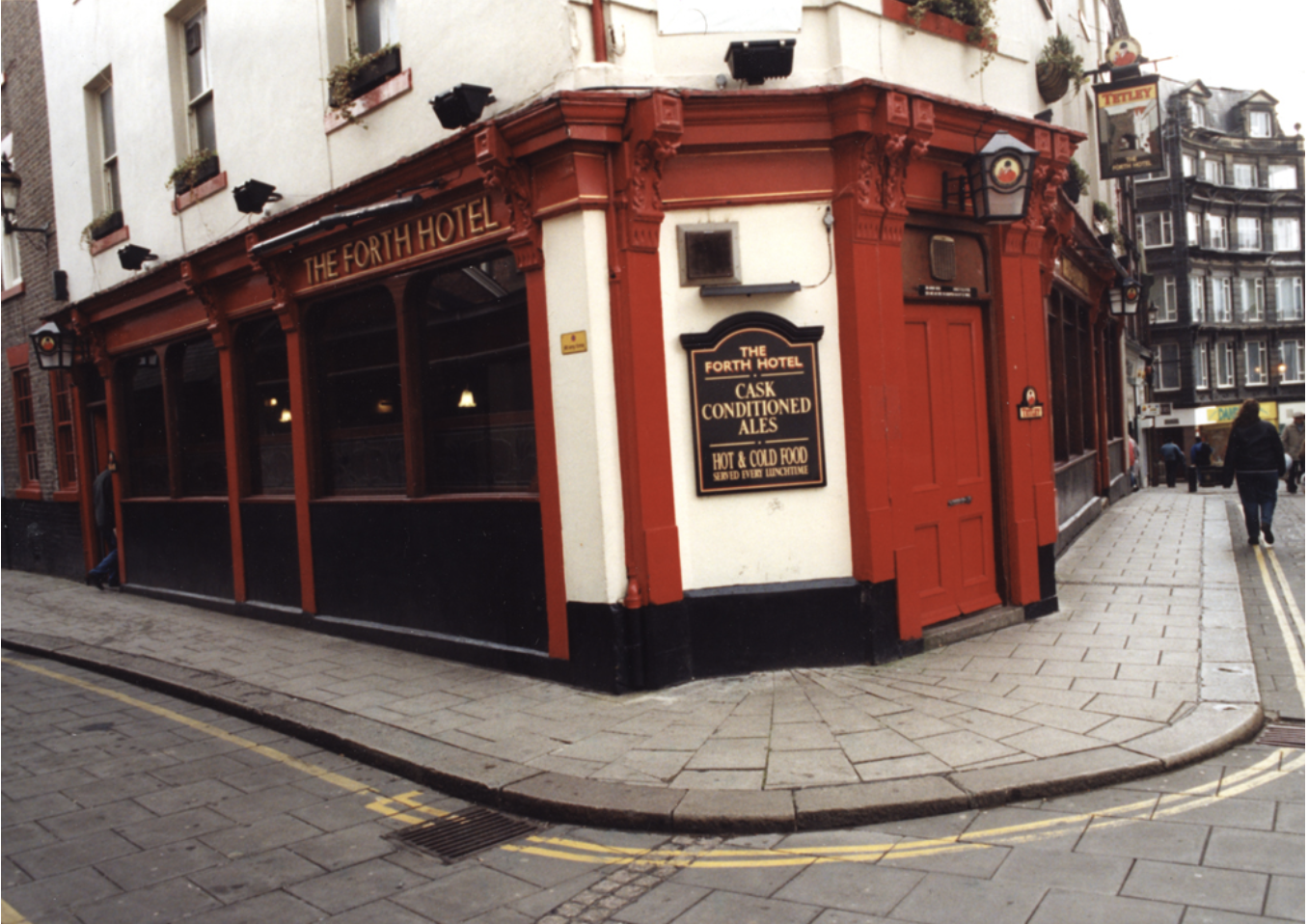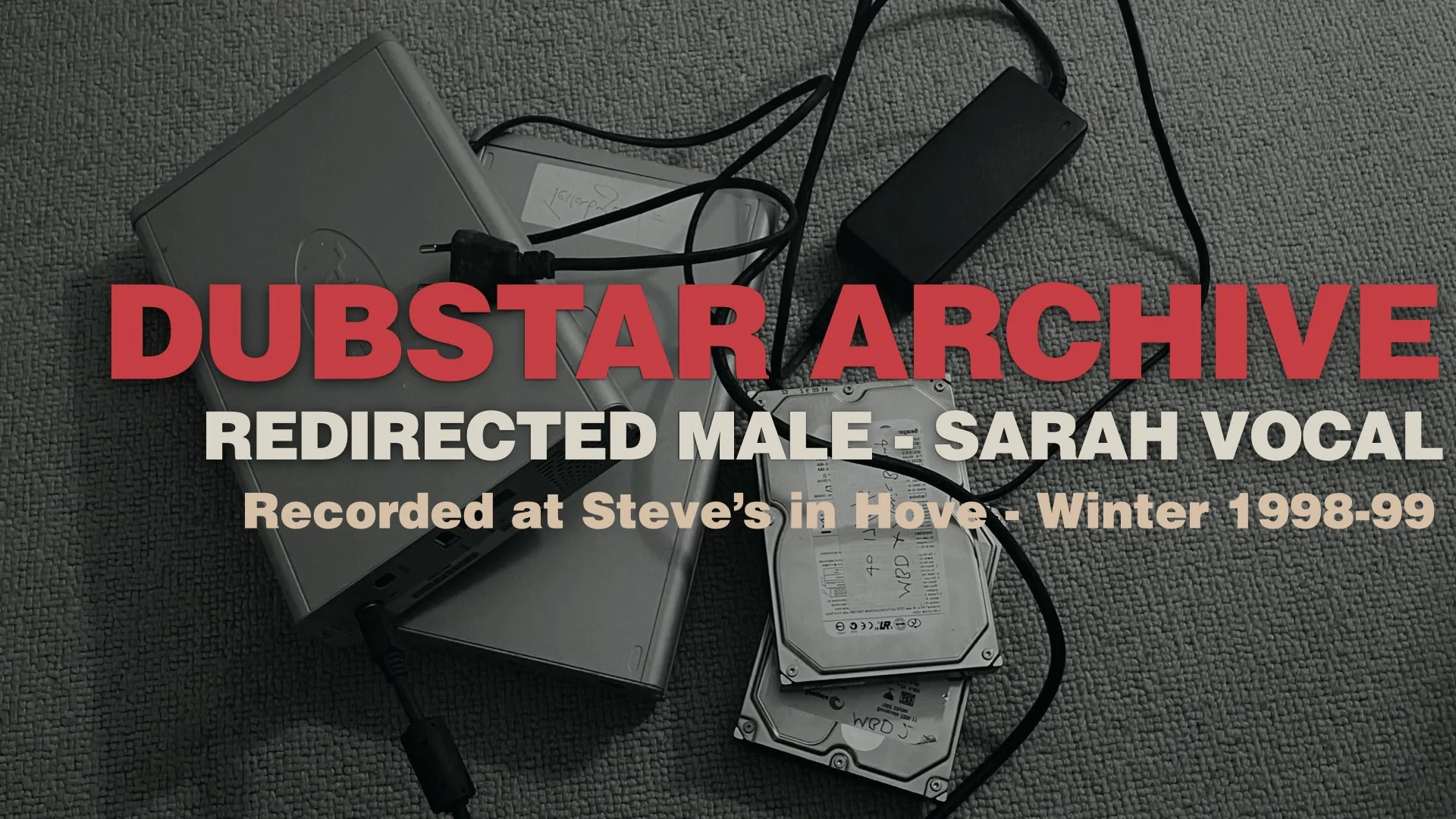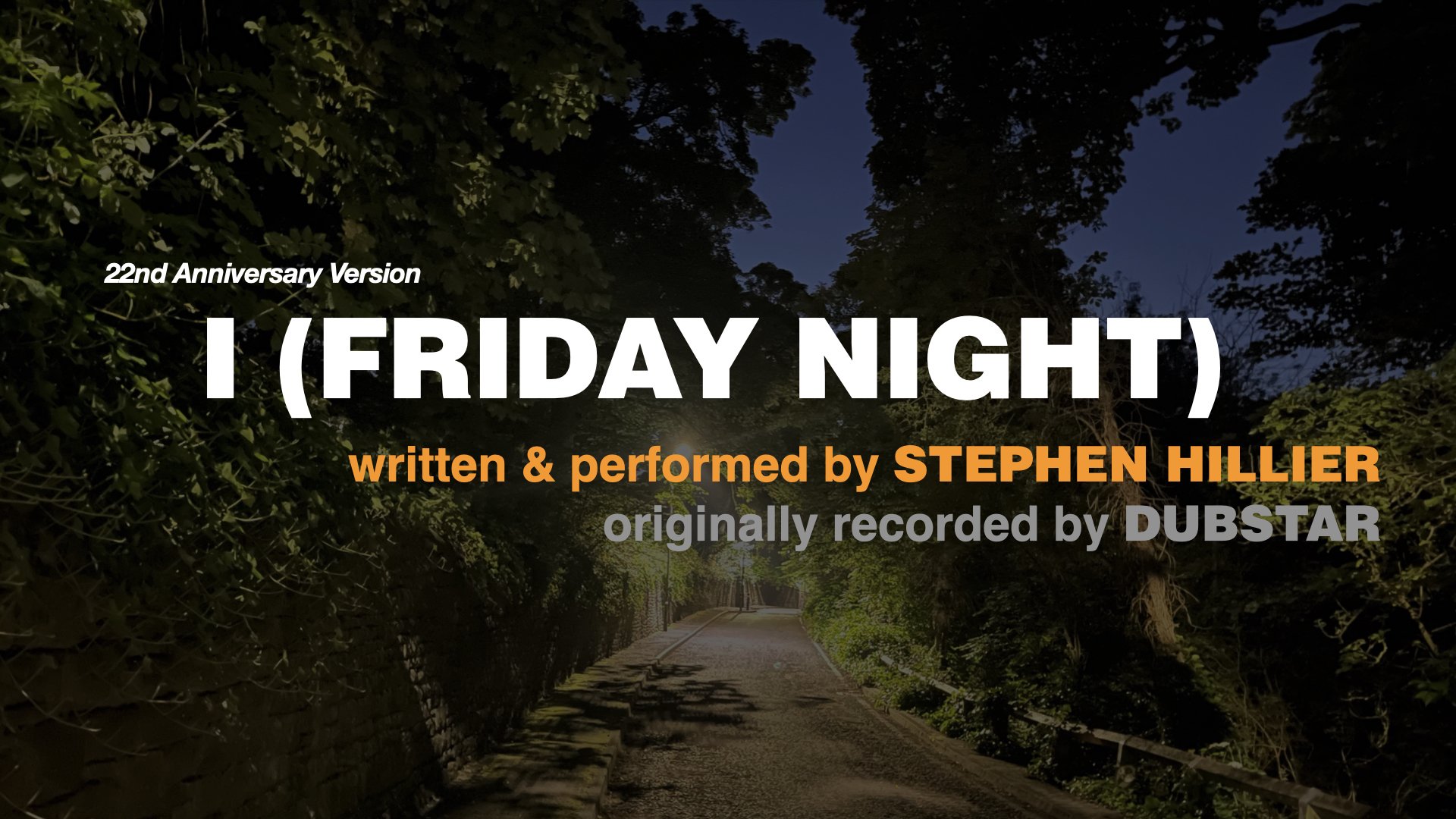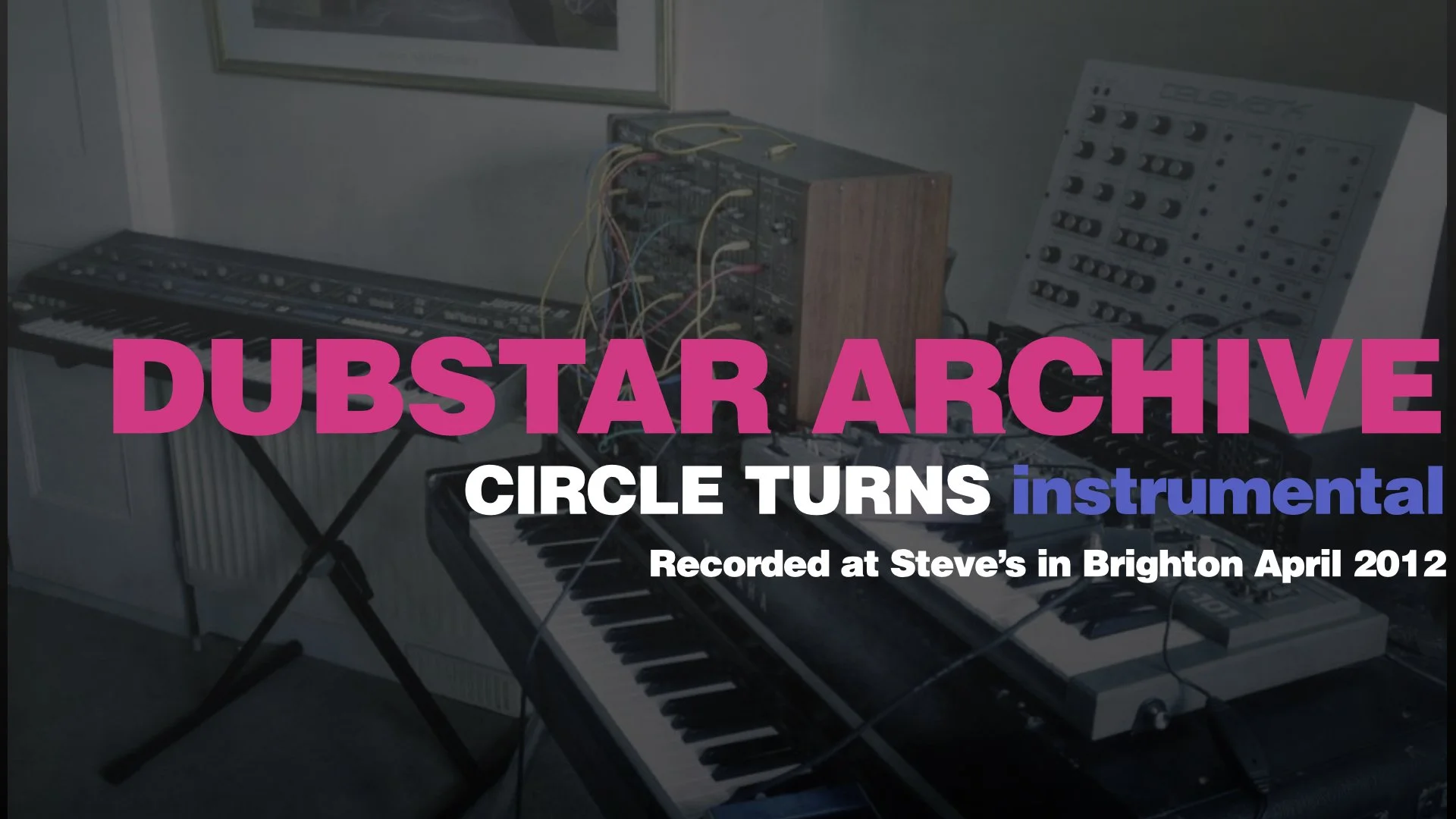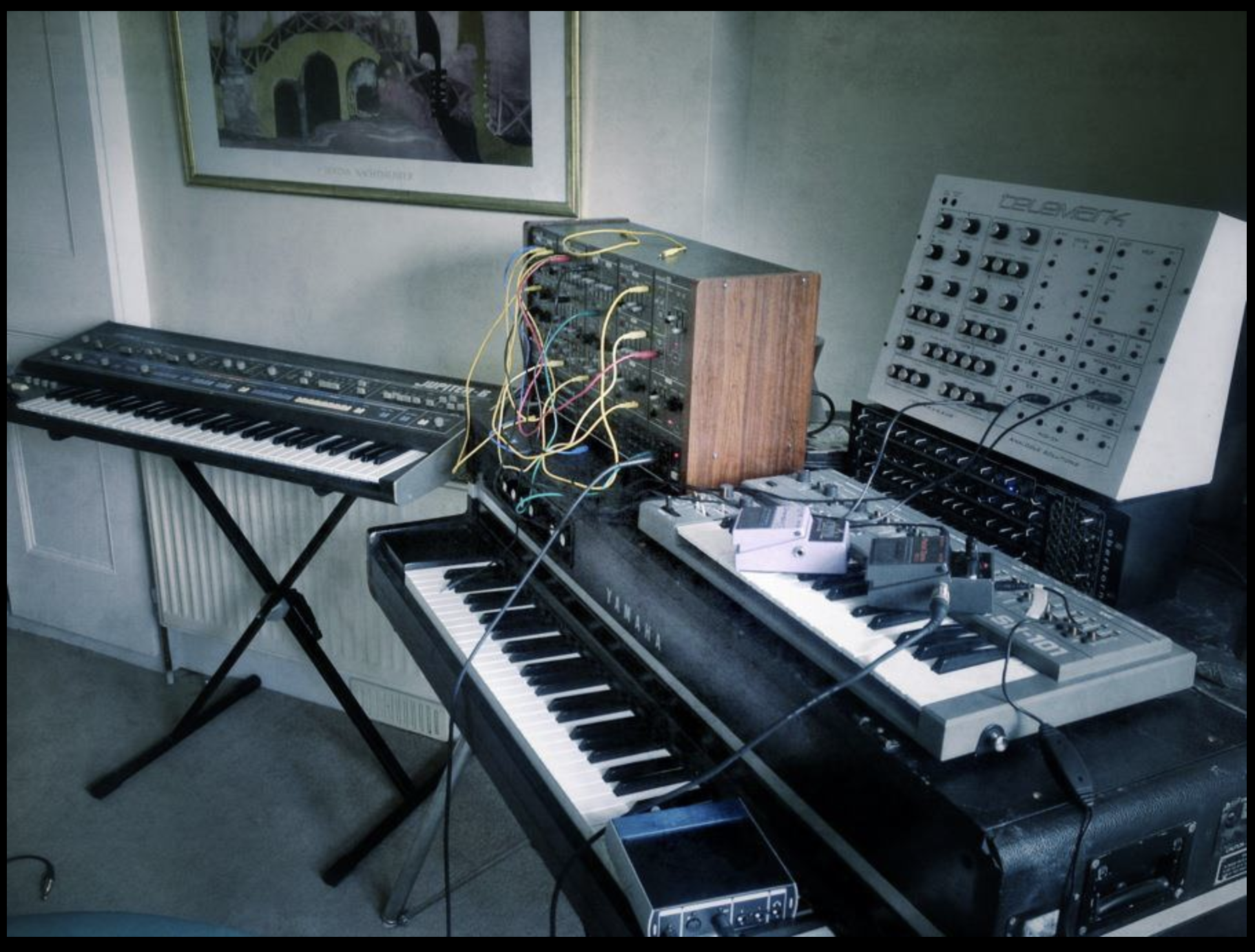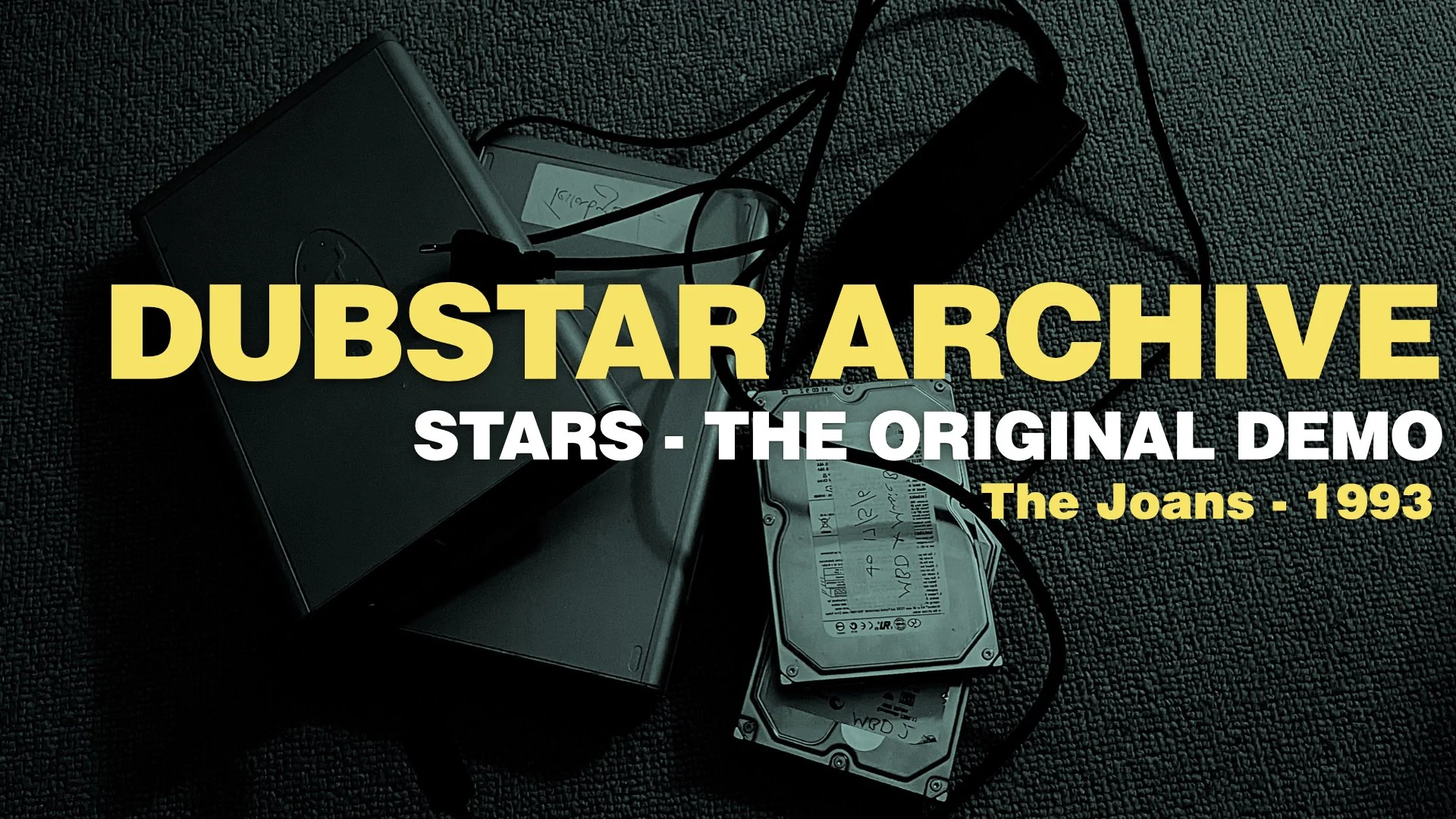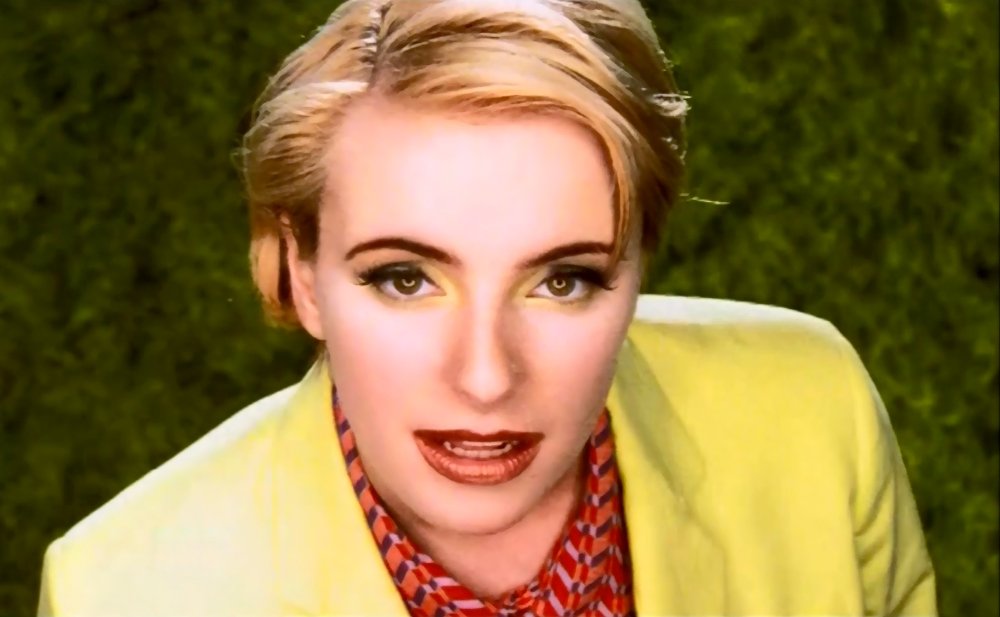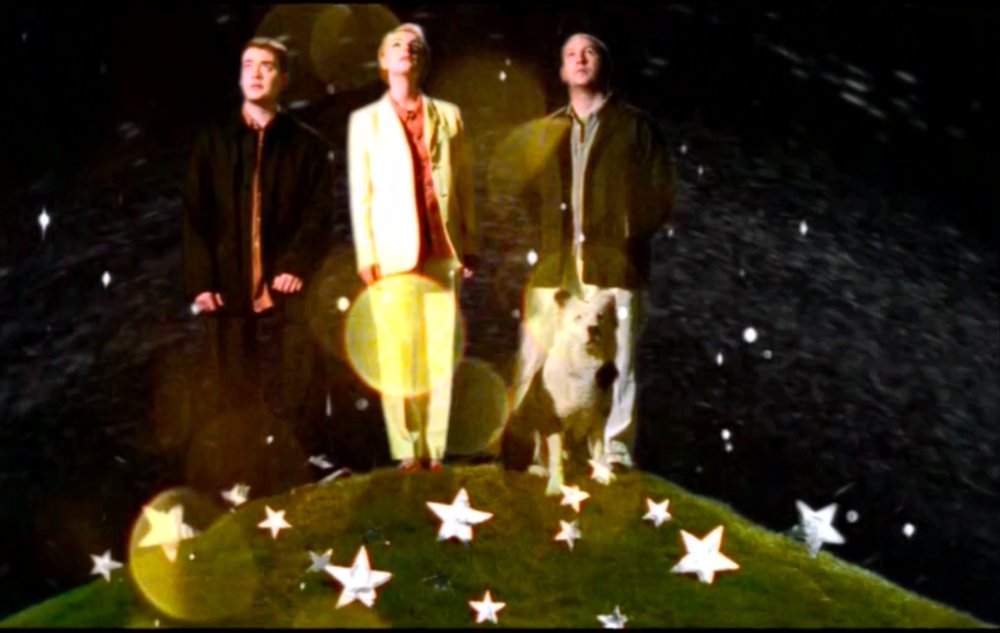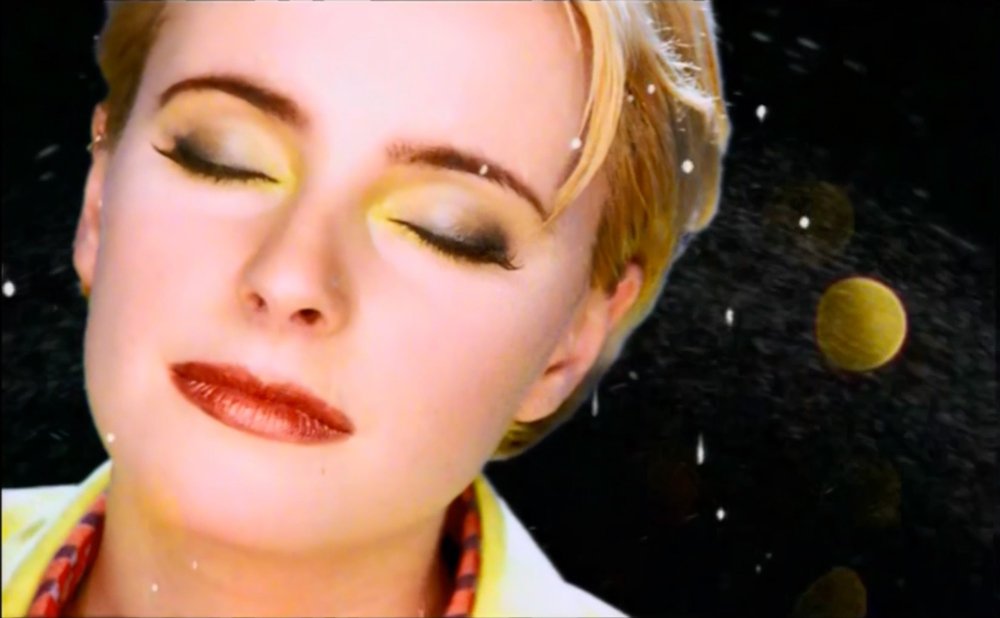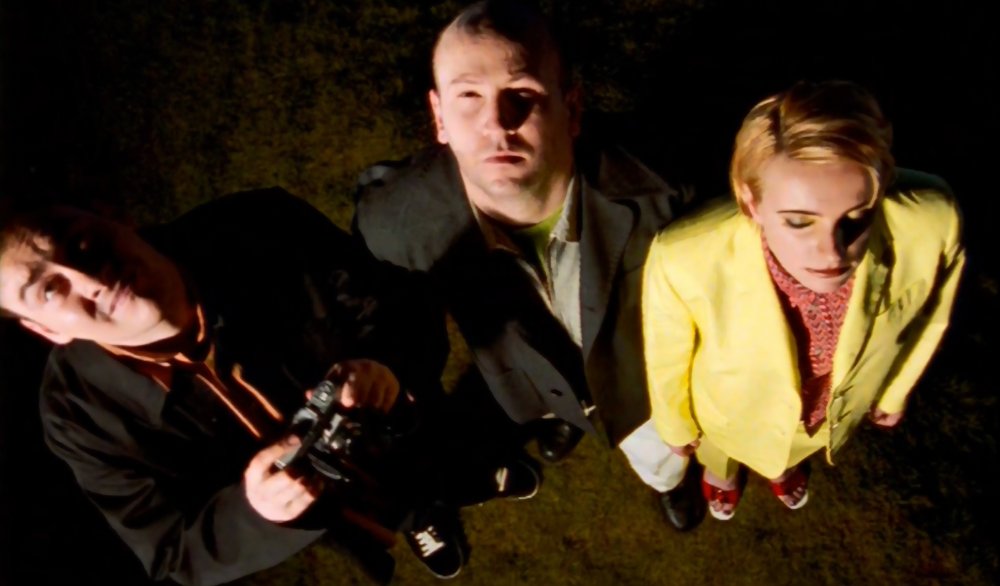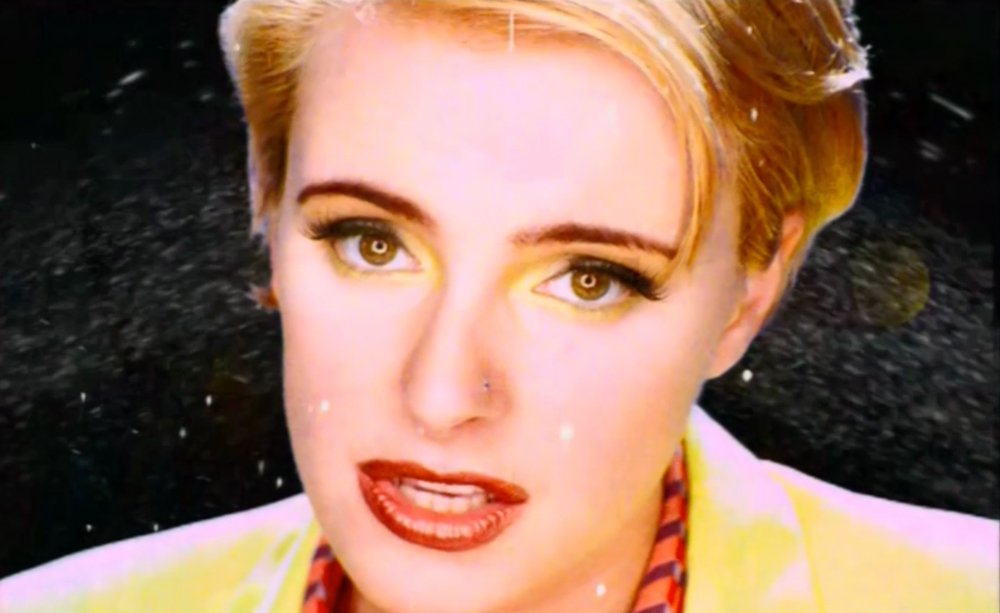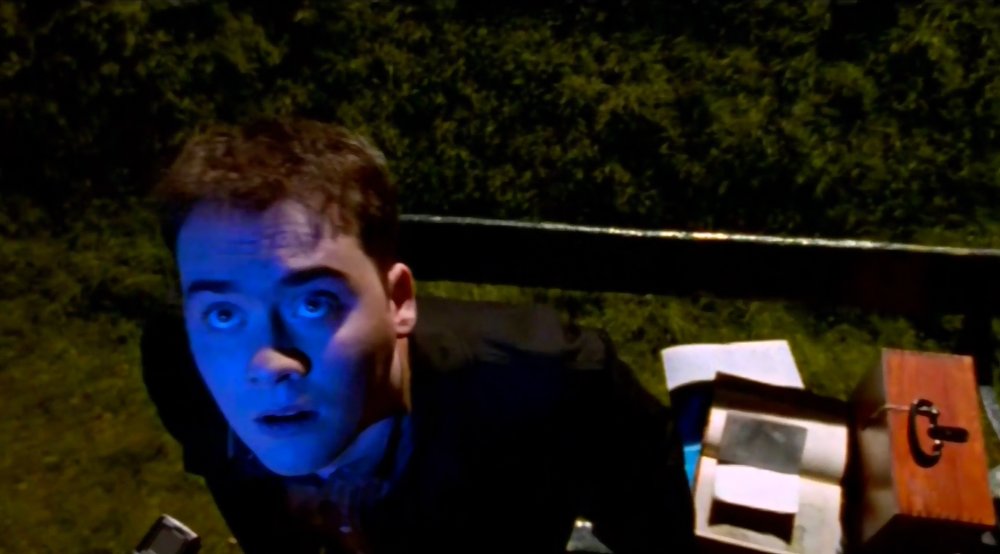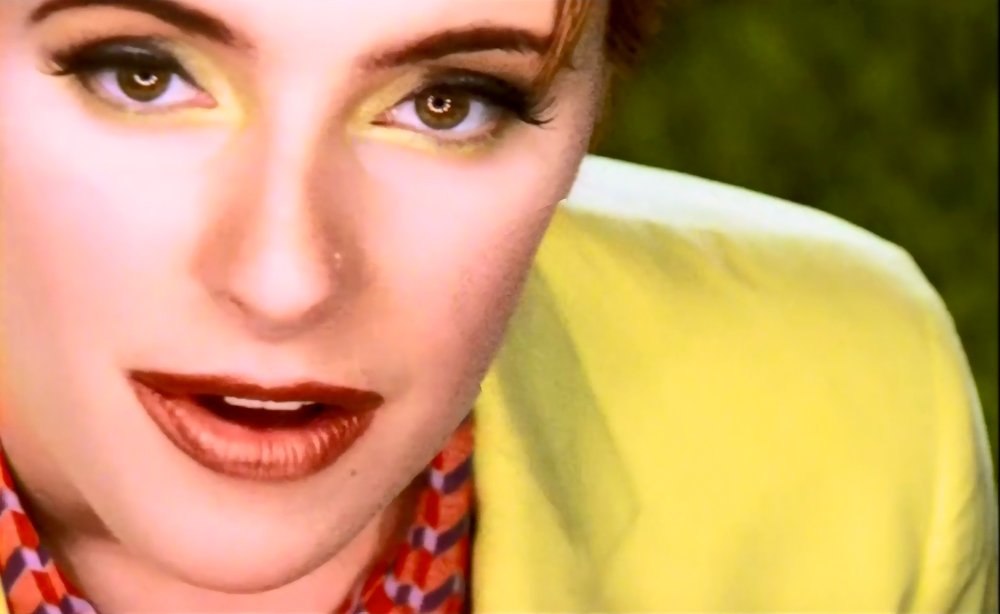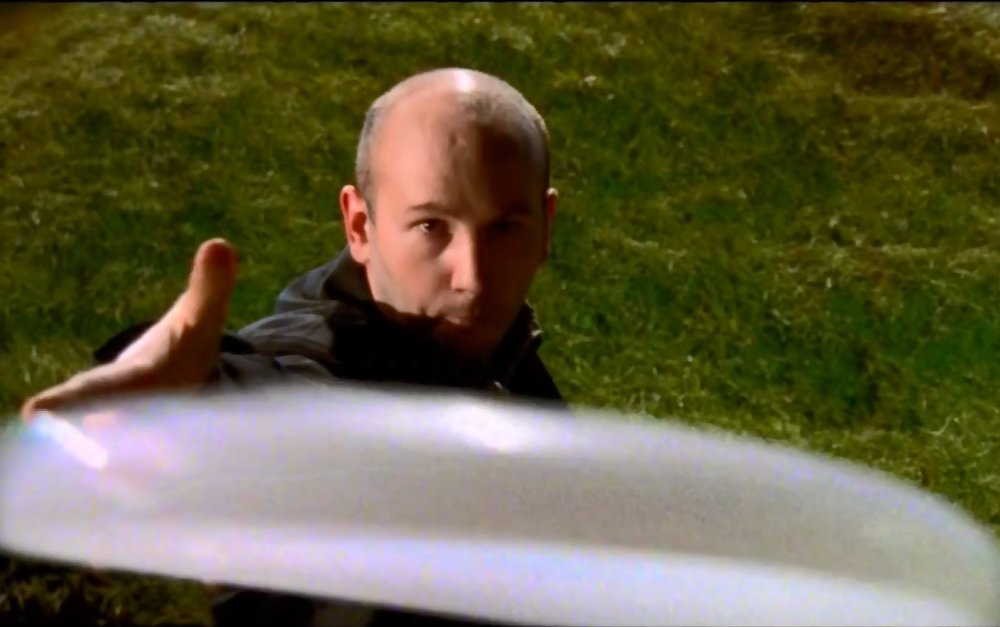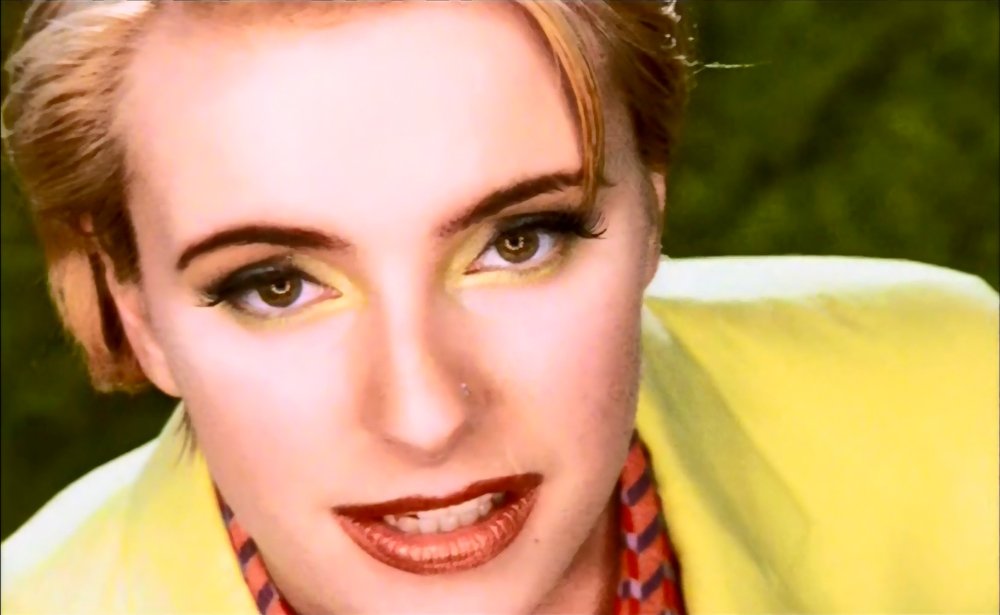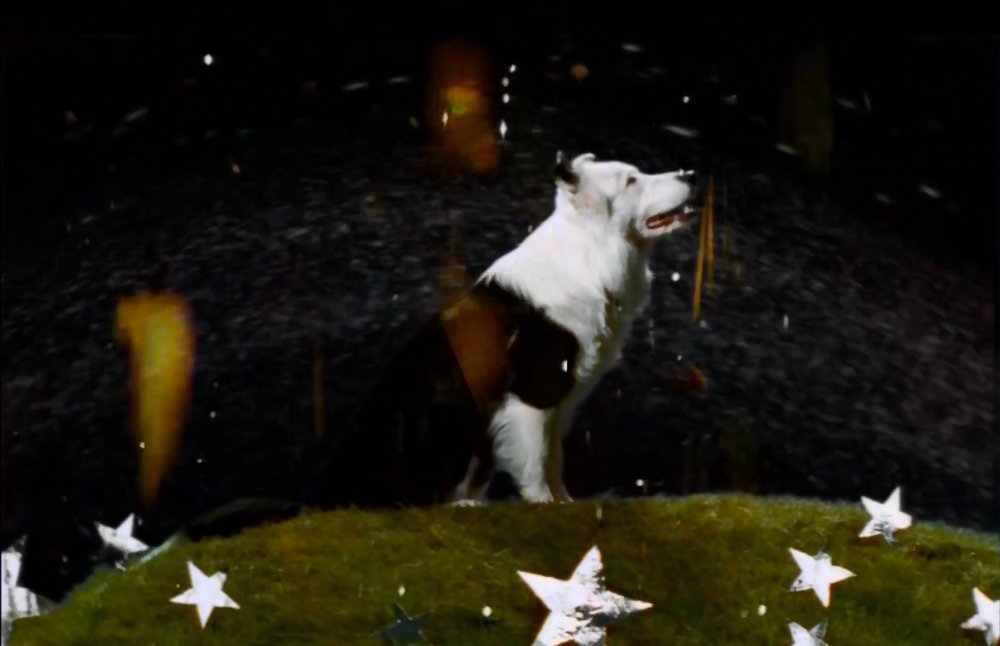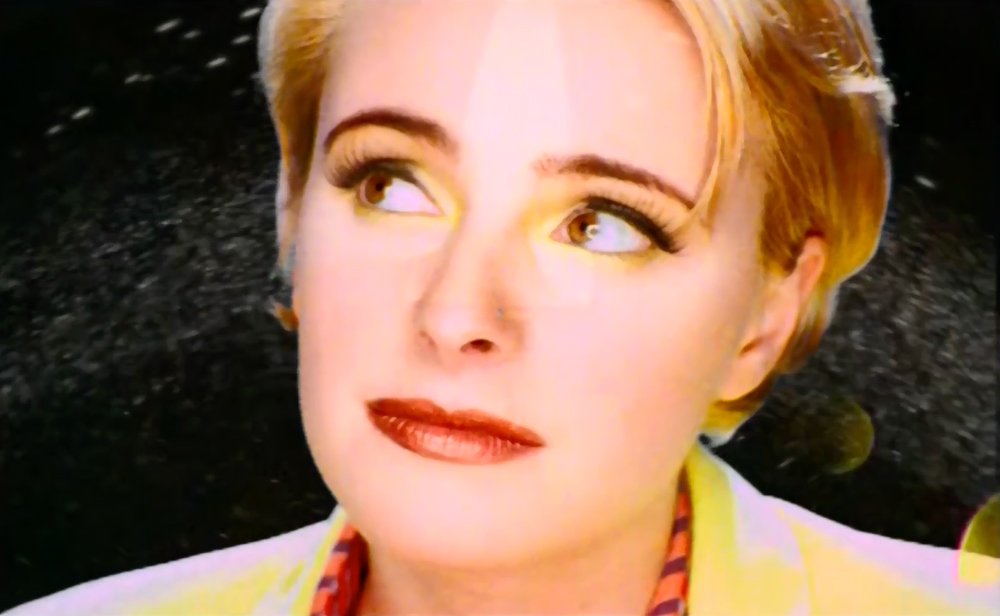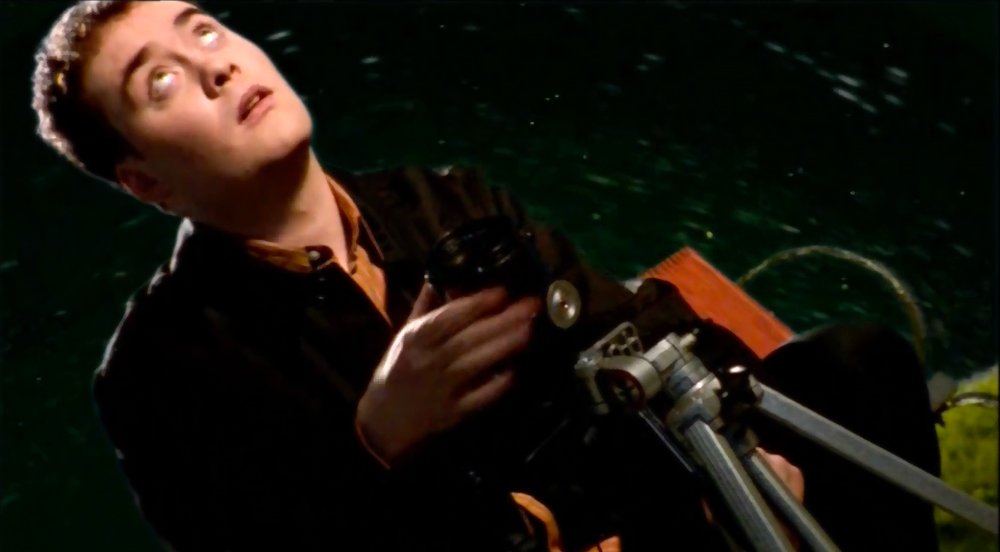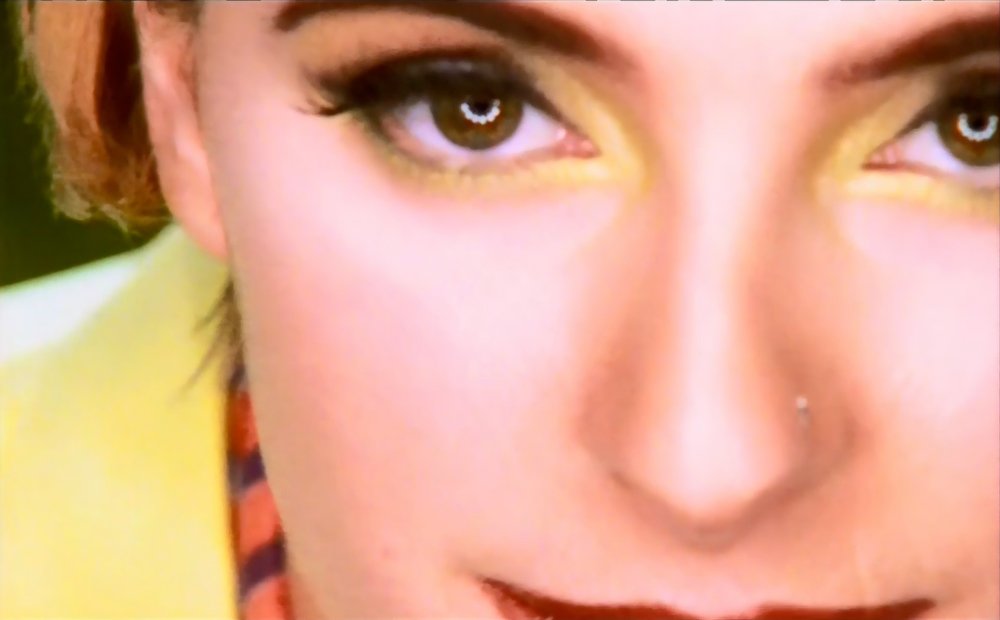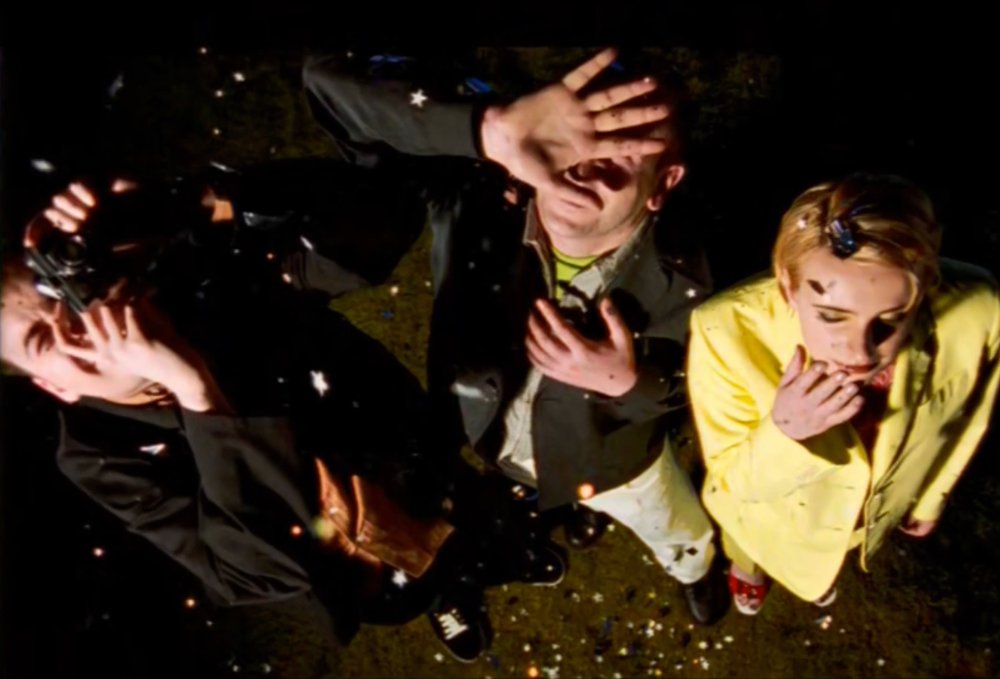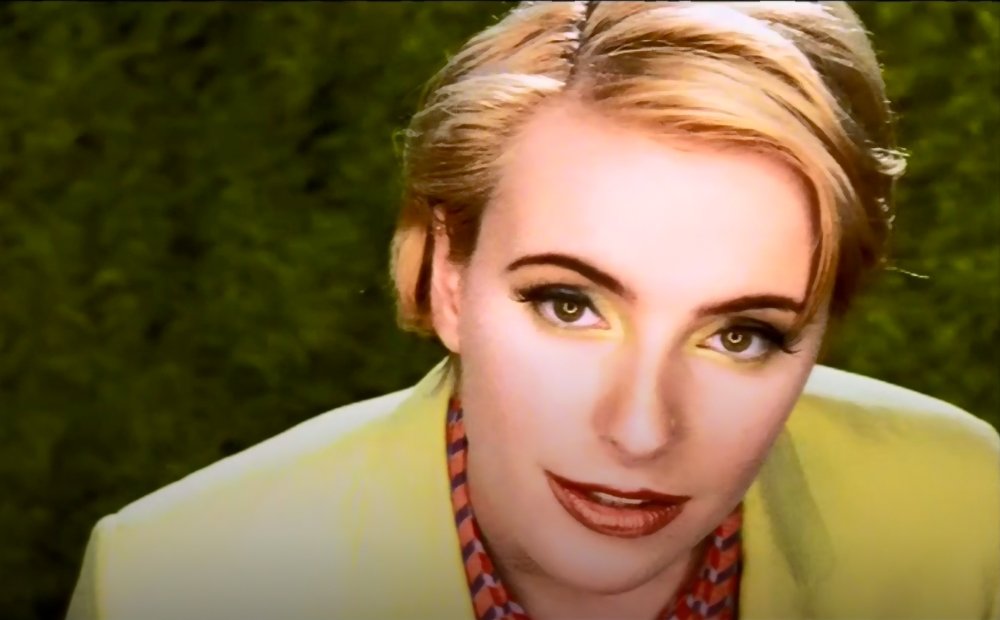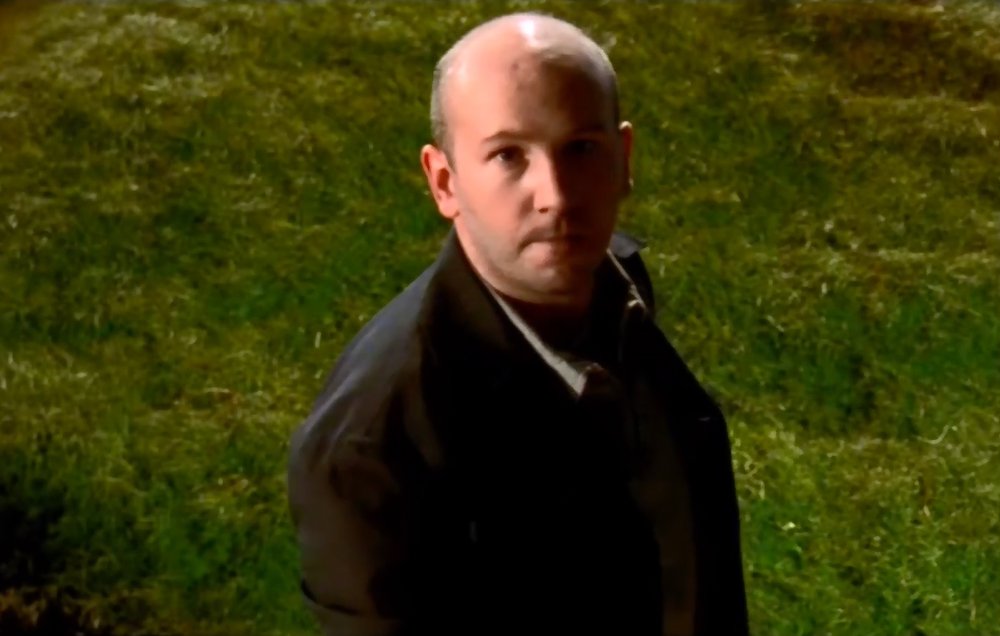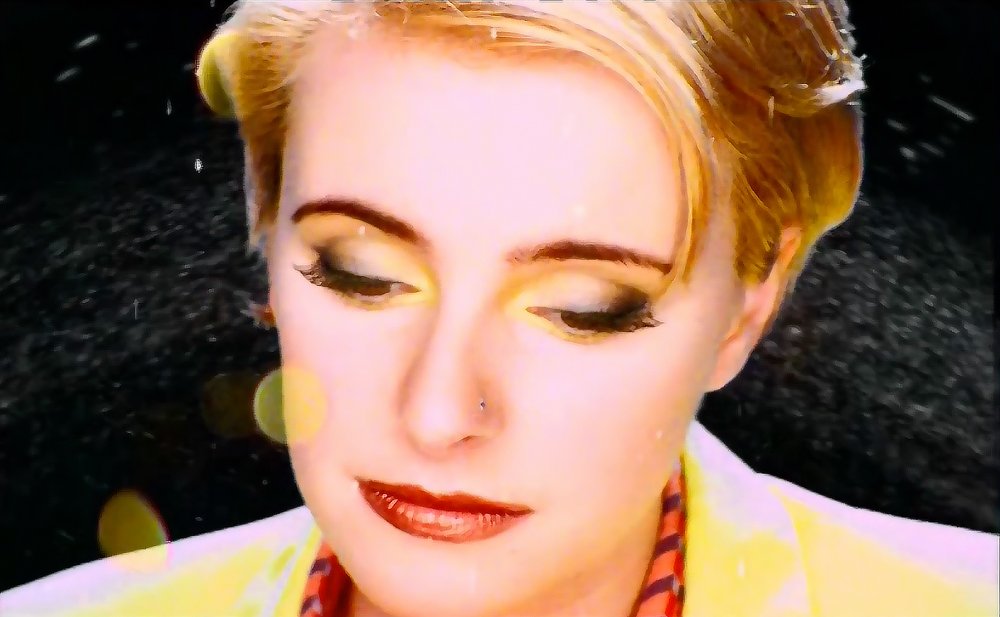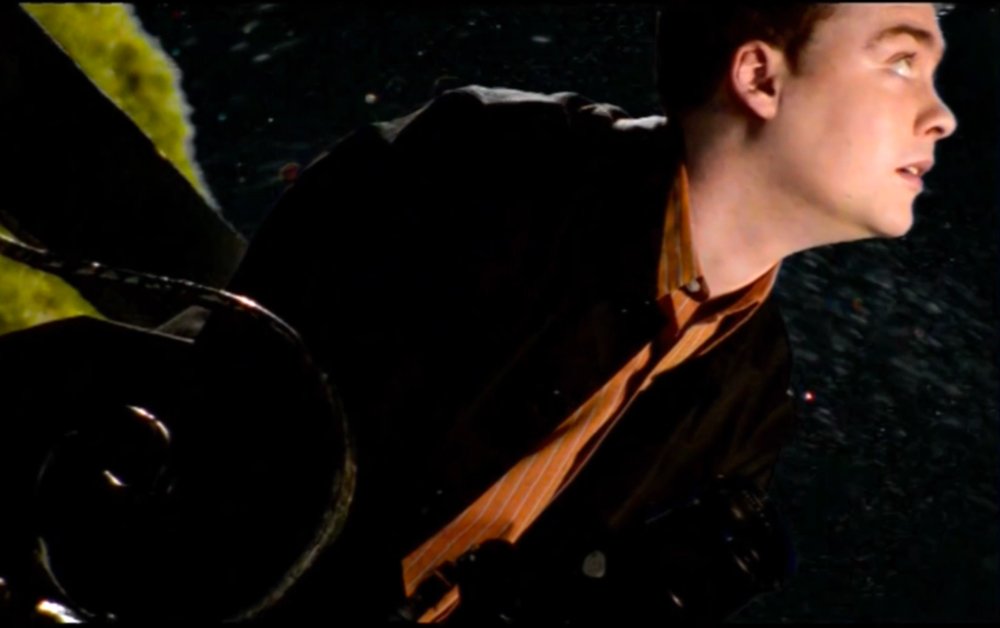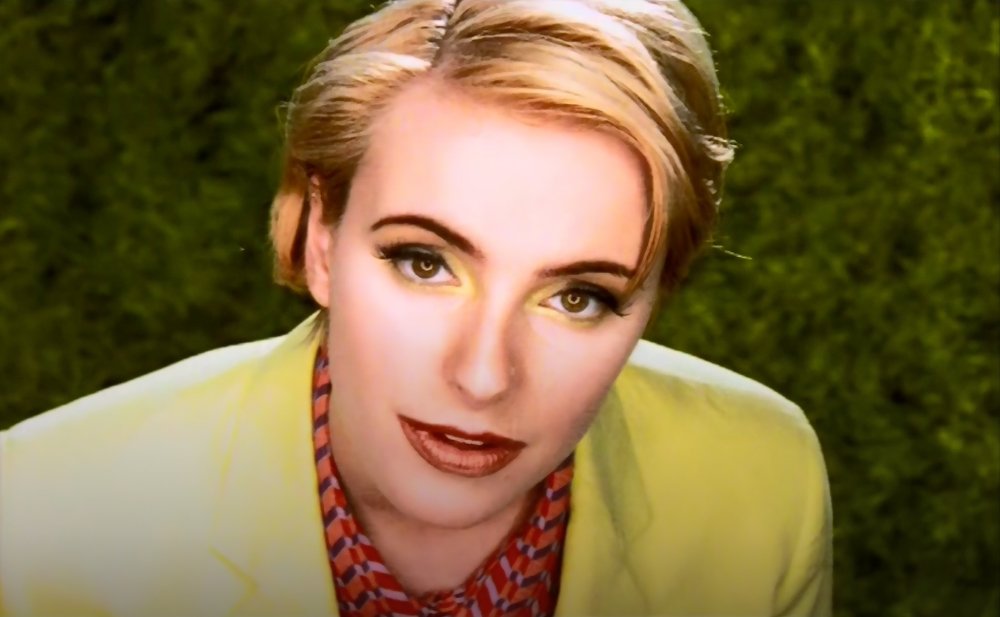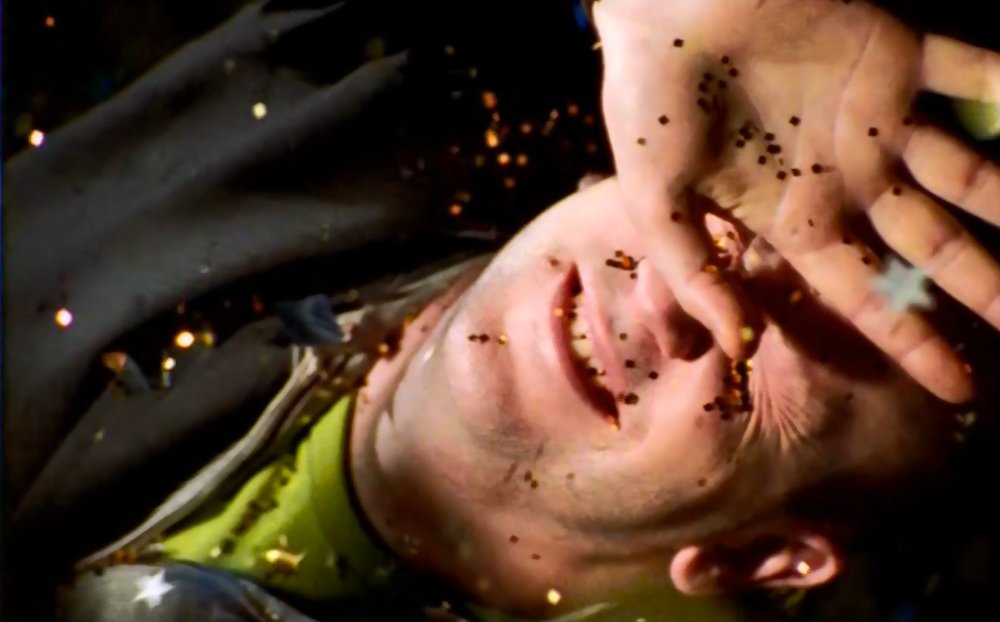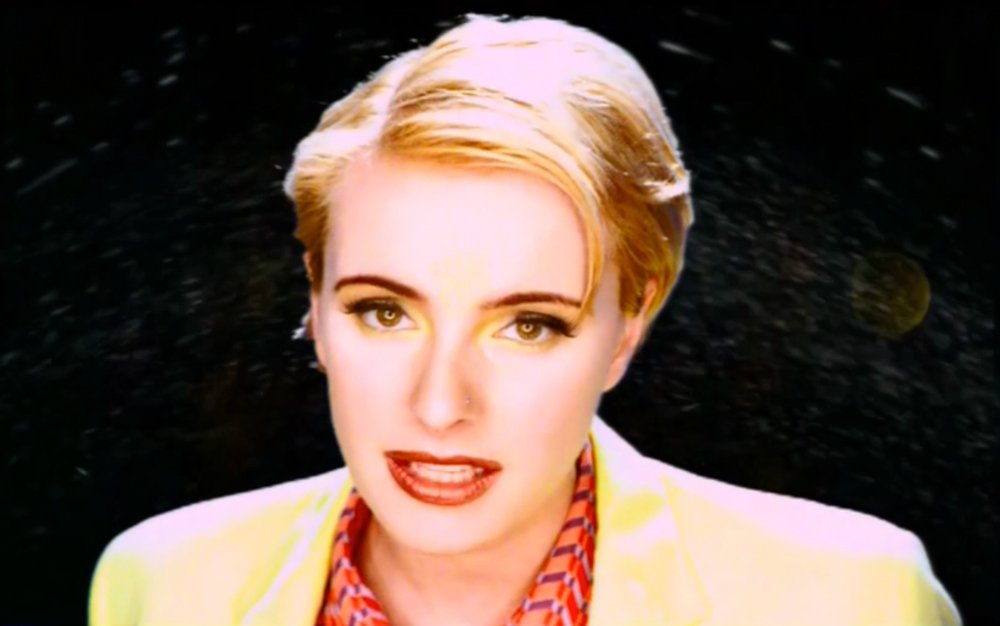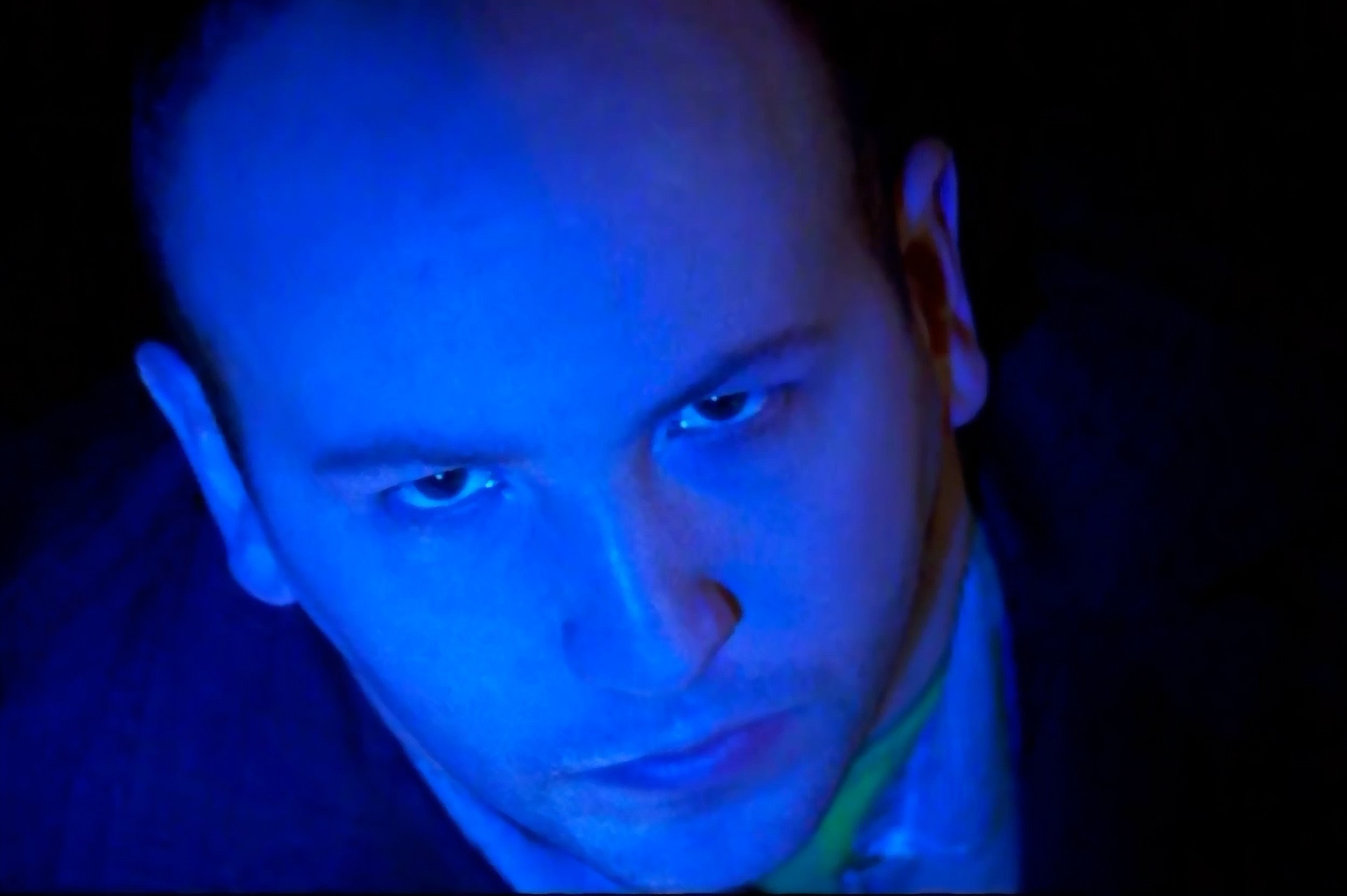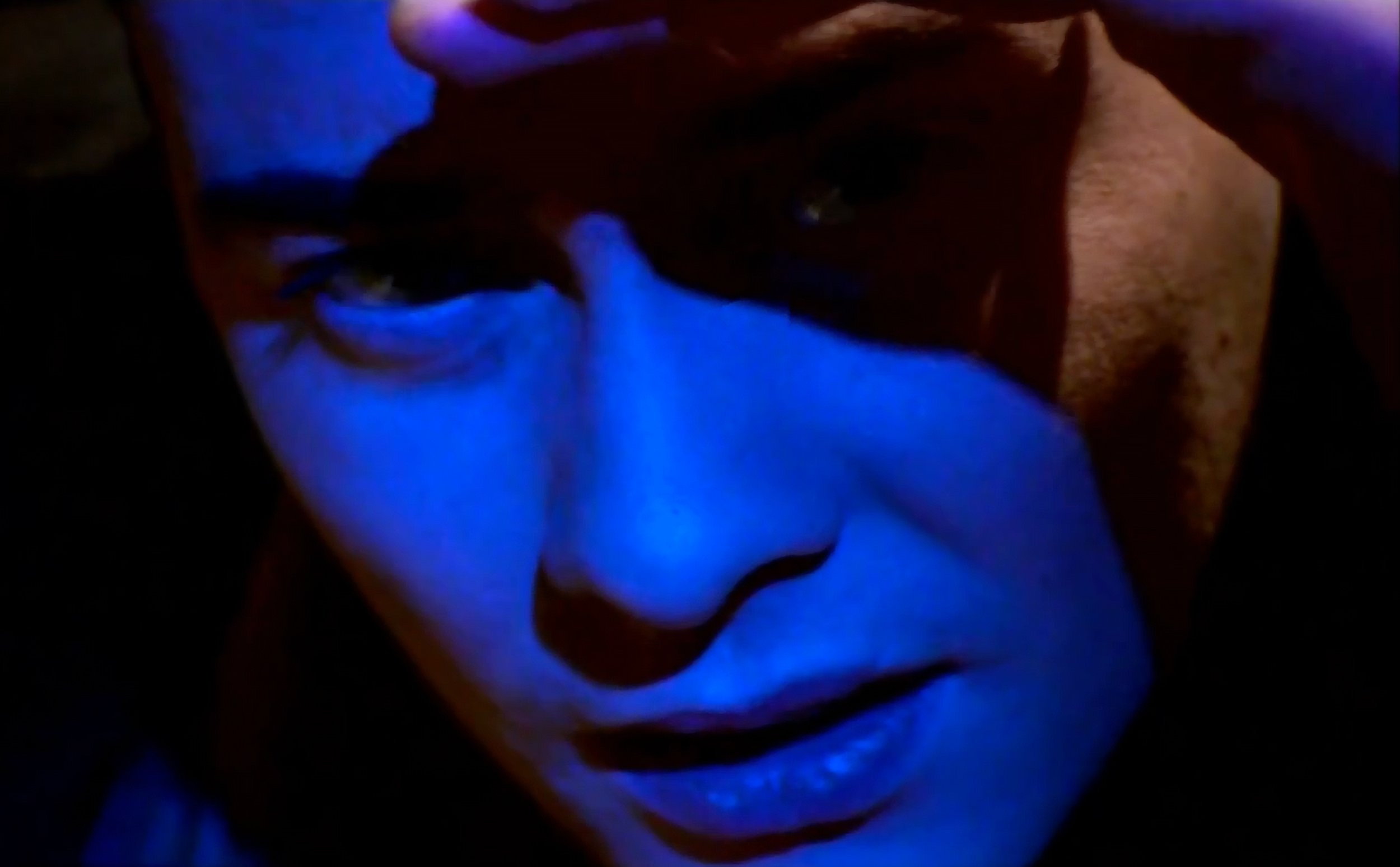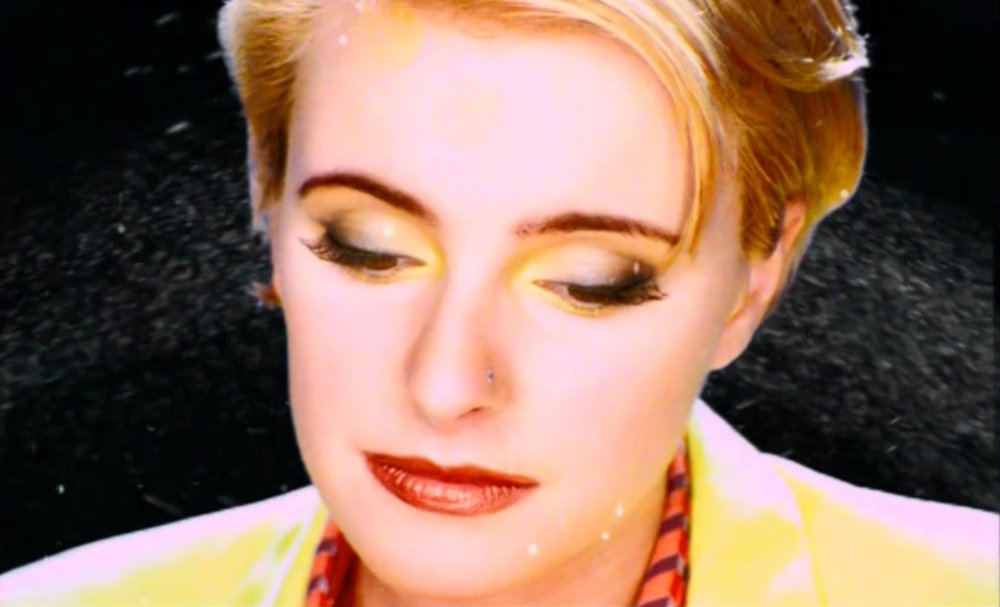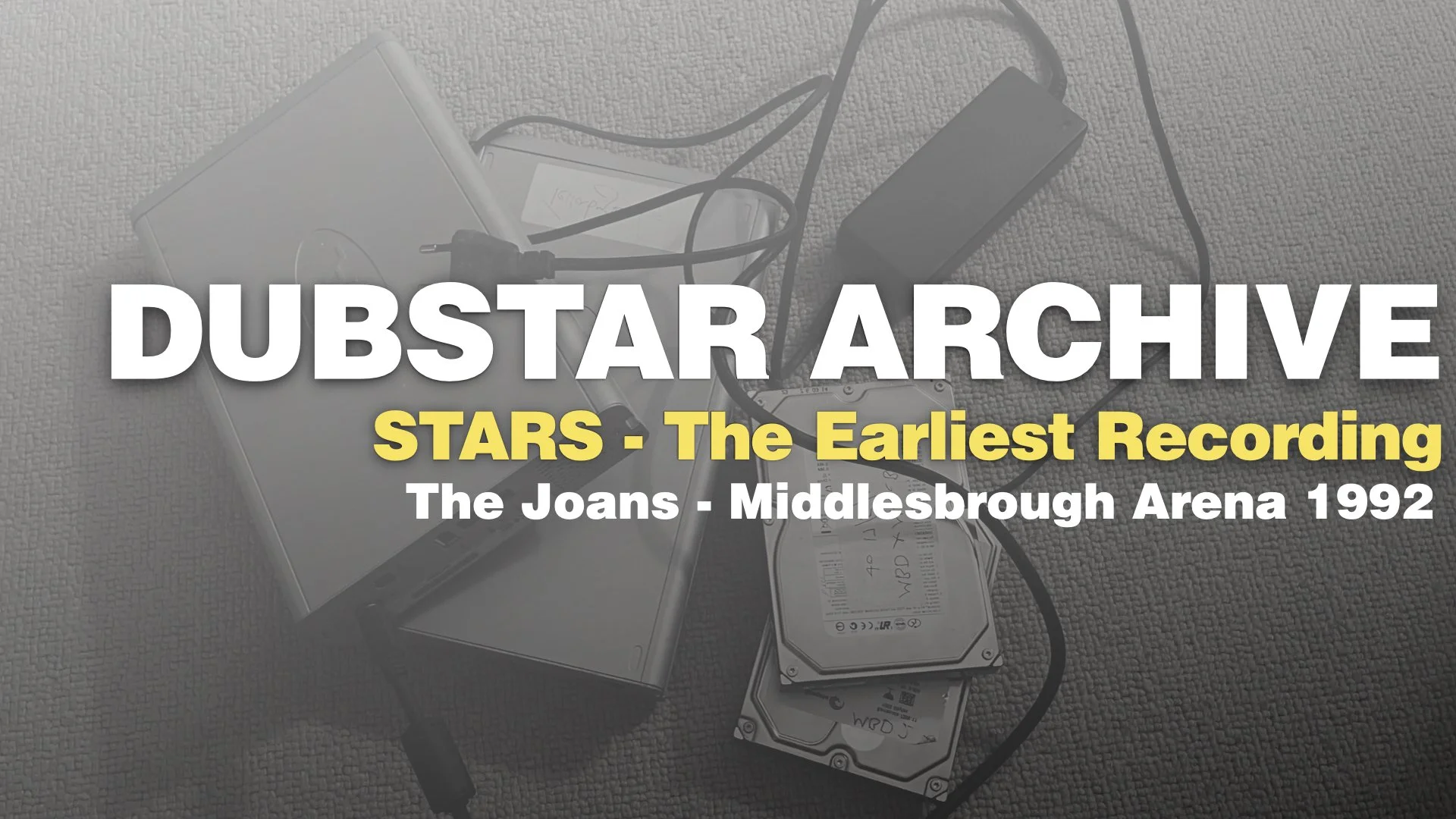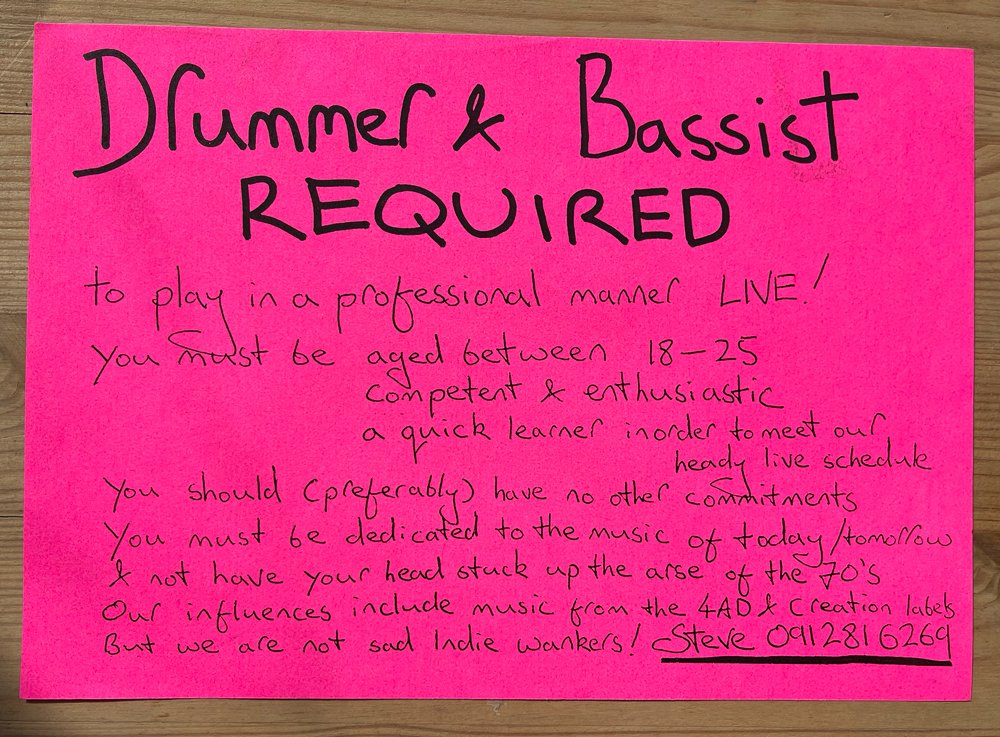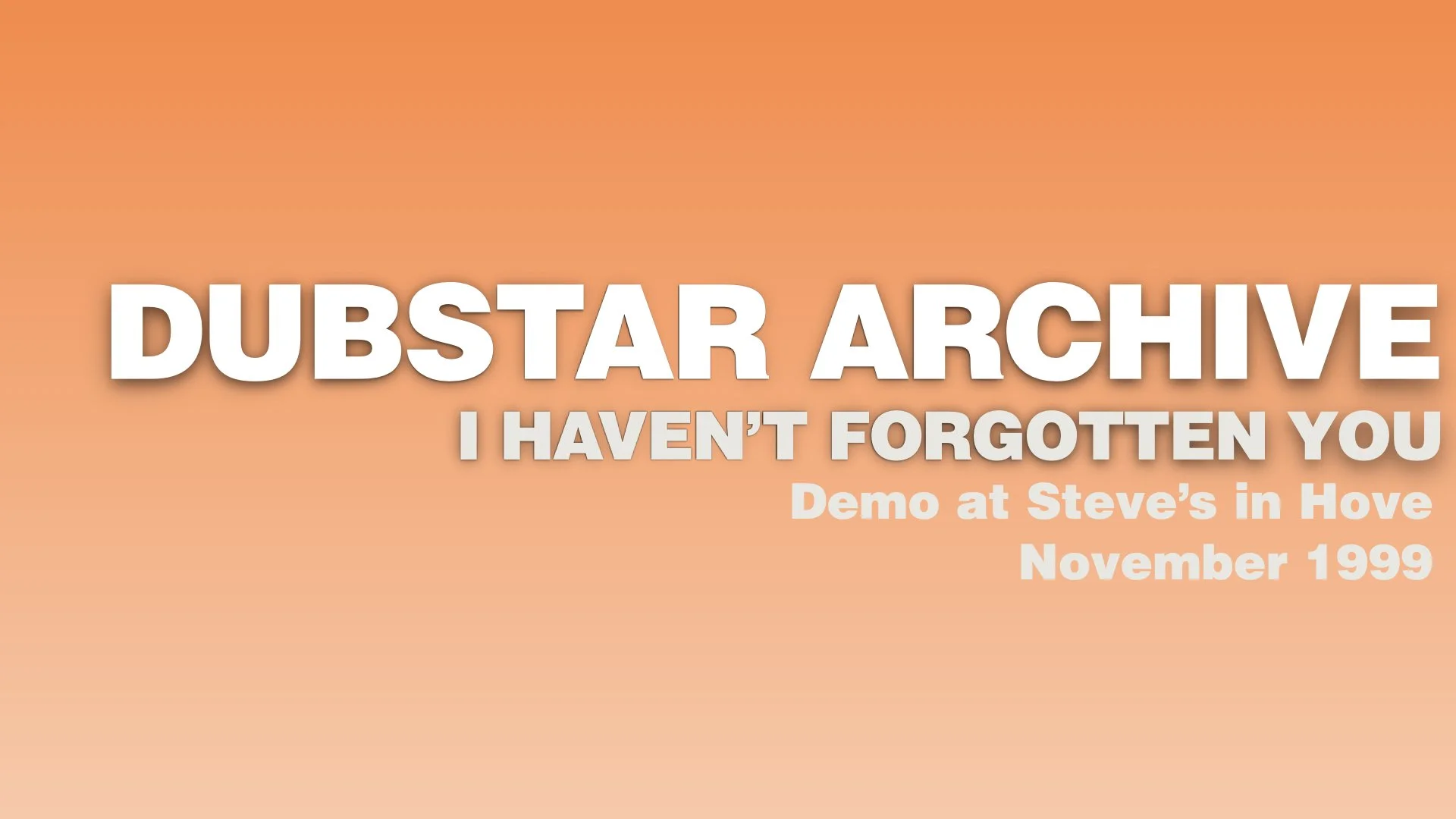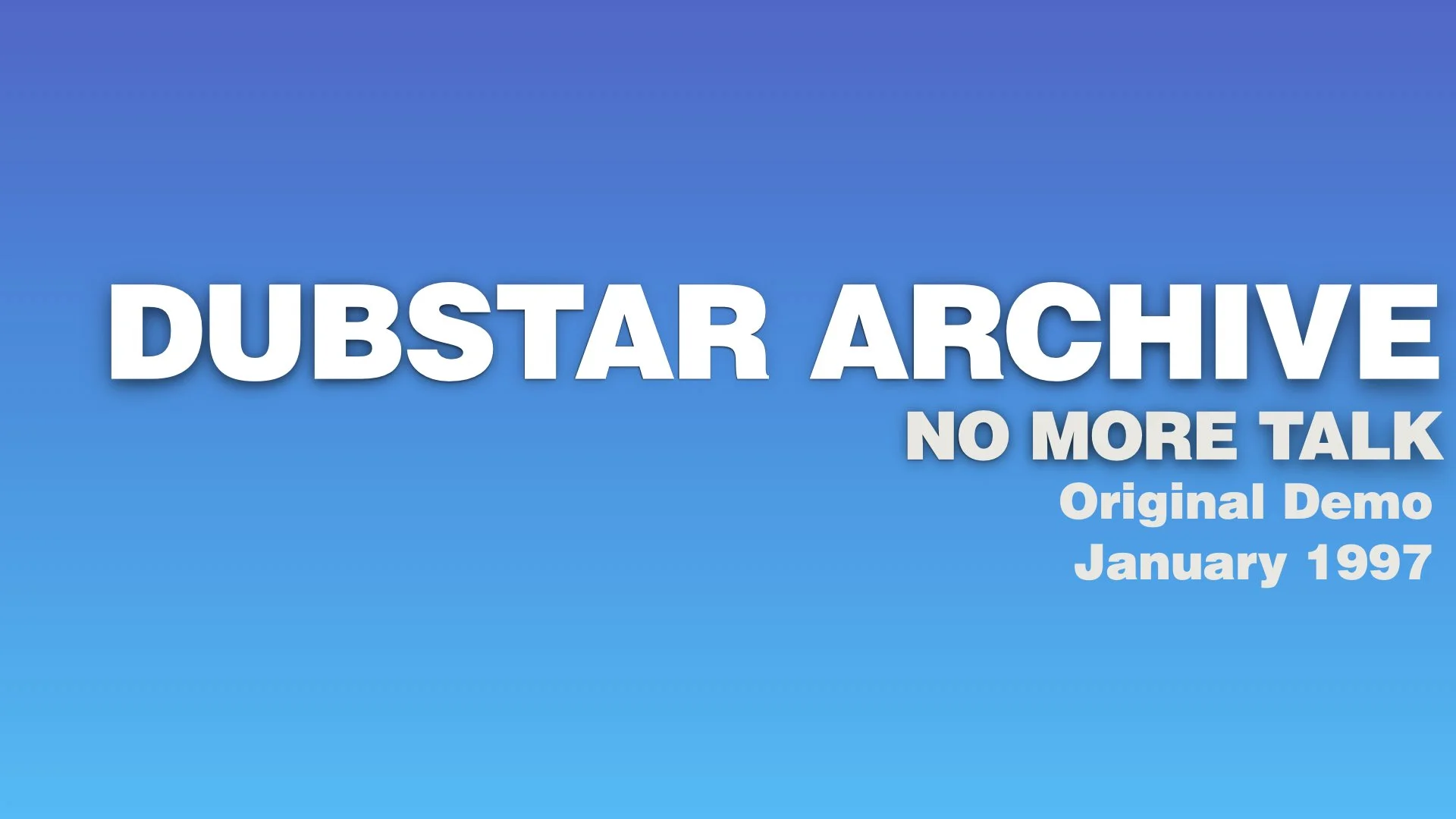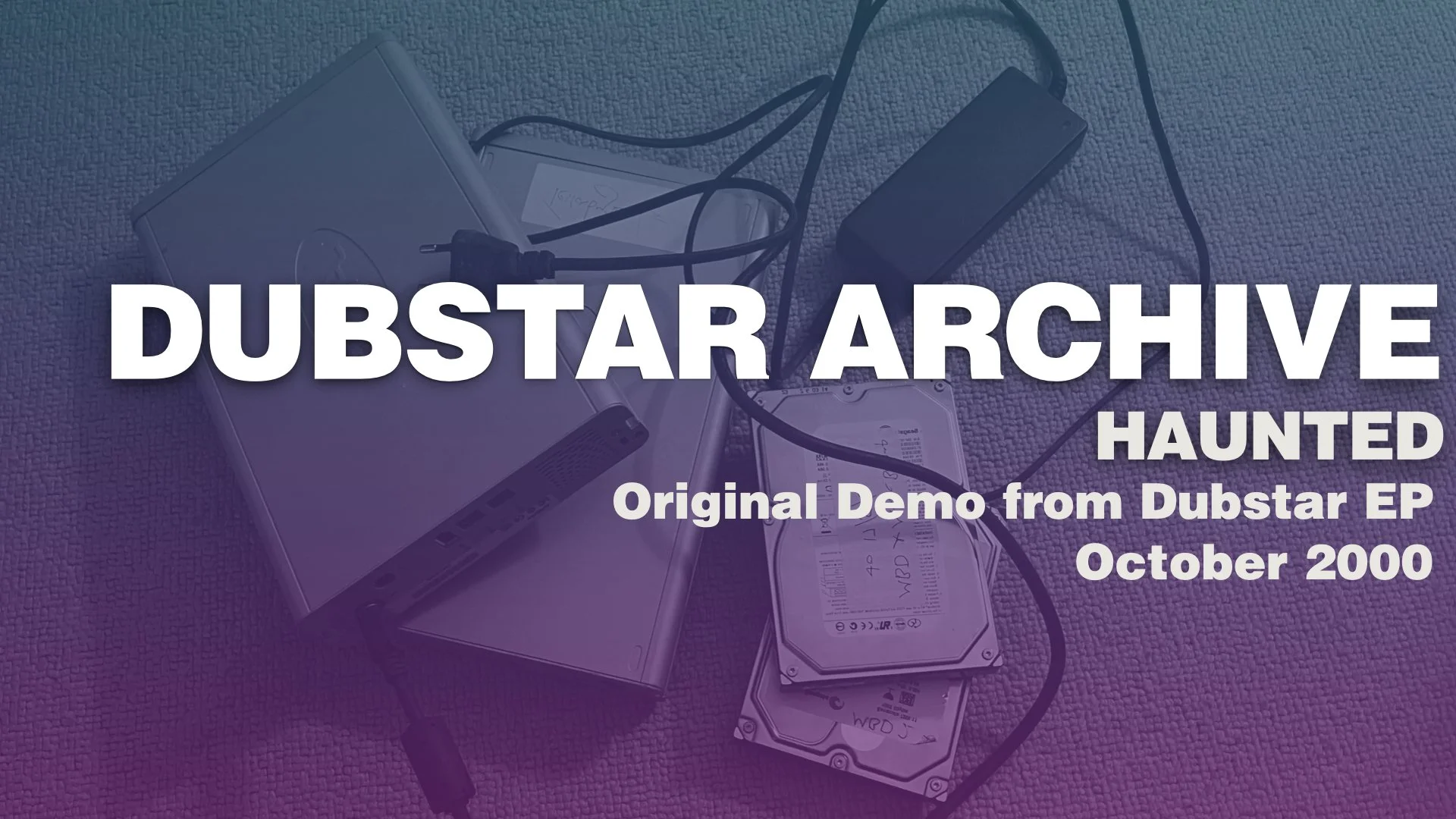Dubstar: Goodbye at 25
It was twenty five years ago today that Goodbye was released, an anniversary that’s taken me by surprise (I was just finishing off the mixing of an album due out in November). So from the top of my head, here are some of the strongest memories I have of the recording of ‘Death is the End’, the second Dubstar album.
The album itself was essentially a ‘second pressing’ of songs from our repertoire from Disgraceful and our previous incarnation as The Joans plus a handful of new songs I’d written in late 1996 and early 1997.
I Will Be Your Girlfriend - Originally a The Joans song called Joni
Inside - New song written in Woodstock for Goodbye
No More Talk - the oldest Dubstar song, written when I was at school
Polestar - written in Newcastle for Goodbye
Say The Worst Thing First - written in Newcastle for Goodbye
Cathedral Park - written in Jesmond back in 1991
It’s Over - written in Newcastle for Goodbye
The View From Here - written during the Disgraceful era as a B-side to Elevator Song
My Start In Wallsend - written in Newcastle for Goodbye
It’s Clear - originally Brownmouth, a song from The Joans
Ghost - written at Real World studios for Goodbye
Can’t Tell Me - a song we played live in the Disgraceful era
Wearchest - a song from The Joans, written for a radio appearance eon Wear FM
When You Say Goodbye - written in Newcastle for Goodbye
Let’s Go - written in Woodstock for Goodbye
Goodbye was demoed and completed in five recording studios:
Dubstar’s studio at the Arts Centre, Newcastle upon Tyne
It was so bloody cold in there! But the Forth Hotel pub was just around the corner so it was easy to warm up at night. This was where almost all the songs from Goodbye began, sketched out on an old Atari ST and a copy of Cubase on a floppy disk.
Ancient tech but the tightest MIDI sequencer I’ve ever used
Jacobs Studio, Surrey
I put it to the record company that we record some demos in a proper studio down south, so we spent three or four days in Jacob’s studio in Surrey. To be honest, this request was more to do with me wanting to get out of my flat in Newcastle than actually needing a 24 track recording facility. We did a fairly good job down there though, and put together early versions of It’s Clear, My Start in Wallsend and a couple of others. My mum and dad visited us one day, they were terribly excited by the whole thing, and this was also the first time I had a chance to fully explore the novel excitement of the internet. There was a website that a fan had put together called the Dubstar Webgarden which I loved. We also started to get fan mail from across Europe, which was amazing.
And everything we recorded was on ADAT, an archaic format briefly popular in the 1990s but as reliable as any VHS cassette ever was. We even had a BRC which literally meant ‘Big Remote Control’ to run the four cassette recorders. My enduring thanks to Claire, the engineer, who made it all work.
It was during this period that our new manager Stevø was negotiating our USA record deal, and we met Nick Gatfield for the first time (who six years later would go on to sign Keane to Island Records, small world). I remember a very strong feeling of excitement and extreme apprehension, which would accompany me on every escapade Stevø would lead us into.
Steve, the man who brought you Soft Cell and The The
Stephen Hague’s shack in Woodstock
Our first trip to the USA, and to the magical woodlands in upstate New York. We stayed in Bob Clearmountain’s house and recorded at Stephen’s newly built studio, where the groundwork for I Will Be Your Girlfriend, It’s Clear and You Can’t Tell Me were recorded.
It snowed, maybe not every day but there was snow everywhere.
My most enduring memory of this time was the day the me and Paul Wadsworth, our drummer, were so bored hanging around in the woods that we decided to drive to New York City for the day, a journey of about two and half hours. On arriving we couldn’t find anywhere to park in the entire midtown area (I hadn’t watched Seinfeld at this point) and by the time we managed to pull over we’d kind of given up on the trip anyway.
Getting ready for our big day out
Actual photo taken of me trying to find the way back to Woodstock
Then began the journey home. I immediately got lost leaving NYC with no map, no mobile phone, no internet of course and no record of the phone numbers for Clearmountain’s house, Stephen’s place or even the record company back in London. We left Manhattan and ended up in New Jersey. I pulled into a gas station just the other side of the Hudson River, pointed at the skyscrapers and asked the attendant ‘how do we get back there?’.
He said he didn’t know.
I said ‘but it’s just there, look!’
That didn’t help.
So instead of heading north and back the way we came, we headed west for at least an hour, into the dark, into the cold, and eventually into the snow. Oh, and did I mention that we didn’t have any money on us either…?
Real World Studios, Bath
We’d recorded much of Disgraceful at Real World, so it was a real privilege to be back. While the rest of the crew were in the main building I was staying in the producer’s cottage again (Chris was upstairs in the eaves) with it’s own bath and kitchen area. My girlfriend, now wife stayed with us for a week too. She was in the process of finishing her masters degree, and so Peter Gabriel and some of the staff set her up in a studio of her own in the main barn complex in order to complete the mountain of paperwork she was lumbered with. She passed of course.
RAK Studios, London
And then back to St John’s Wood to complete the record. We stayed in the artist accommodation, basically a house next door to the studio and frankly I loved it there. I remember playing the completed mix for Cathedral Park on my own at full blast in the lounge and being blown away, this was going to be massive. Later that night I met up with the rest of the act and our friends from Food Records at the Good Mixer in Camden. Someone asked me what I’d been doing, why was I so late? ‘Listening to Dubstar’ I replied, looking rather smug…I was gently berated for playing my own records and told that wasn’t cool. It was a friendly put down, as I often endured, but at that point I didn’t care. At all.
It was during this stage that I recorded and finished the B-sides for No More Talk in a studio live room that wasn’t in use. It was just my Apple Powerbook 5300cs and a Roland VS880, mad really looking back.
The aftermath…
It was a baking hot June day. I was listening back to the completed album at Stevø’s office in central London and thinking we’d gone too far on this one. I felt that by the end of the album the mood we’d created was actually a bit depressing, and the album was WAY TOO FUCKING LONG! If I recall correctly Stevø agreed. I was crest fallen, as was often the case in 1997, and made a running order on the train back to Brighton of how I thought the album should have gone:
I Will Be Your girlfriend
No More Talk
Inside
Polestar
Say The Worst Thing First
Cathedral Park
View From Here
My Start In Wallsend
Ghost
When You Say Goodbye
Let’s Go
And looking at Goodbye again today I still think this would have made for a far better album, a proper follow up to Disgraceful. But by then it was too late, and it’s certainly too late now. Oh well.
This article includes excerpts from DUBSTAR.COM. Want more? You can find the story behind every Dubstar song ever recorded including dozens of unreleased songs right here at Dubstar.com
And don’t forget to follow me on Twitter for up to be the first to hear new releases and up to the minute news
Dubstar: BROWNMOUTH aka IT'S CLEAR
Brownmouth is the last song that we recorded in my front room in Jesmond with me singing. Shortly after this recording was made I met Sarah for the first time in the Barley Mow pub in Newcastle and the story of The Joans became the story of Dubstar.
This song, like Wearchest before it, was written and recorded specifically for an appearance on the radio. It was a big deal, we’d managed to get a prime time interview with Metro FM legend Nicky Brown (as was usual around this time I’d blagged this for us because I knew Nicky’s producer Jim Brown).
Unfortunately I don’t have recording of our interview but I can’t believe we actually told him the song was named Brownmouth in his honour.
Metro FM lineup from 1989, but which one’s Nicky? Clue: who does your eye linger on most in this pic…?
So how did Brownmouth end up on Goodbye as It’s Clear? As I’ve mentioned before, Goodbye was essentially a second pressing from the repertoire we had as The Joans plus a few new songs I’d written specially. Consequently we recorded a demo of Brownmouth with Sarah singing at Jacob’s studio in Surrey, and as everything we put forward for the second Dubstar album was released, it ended up on the album.
I’m not sure it should be on the album though, it’s very clearly a song from a different time with a mood that jars significantly between My Start In Wallsend and Ghost. But in this age of playlists and streaming you can skip right over it, so it’s no longer problem.
A couple of thoughts: I’m struck by how strongly my accent comes over in this recording, I have a feeling I might have been putting it on a little. It was clear (!) to me that when we came to record it with Sarah the lyric would have be adjusted for her accent. Plain sounds fine when the ‘a’ sound is stressed and open, like we do in the South. But with Sarah’s West Yorkshire accent the word sounds quite different, the ‘a’ becomes more like a longer version of the Swedish ‘ä’ and sounds like ‘air’ rather than ‘ay’. If you try it you’ll find a whole world of Northern England accents open up to you.
So I reworked the lyric and renamed the song. And inevitably I prefer Brownmouth, no act other than Dubstar can have song entitled Brownmouth.
And of all the piano versions of the Dubstar songs I recorded for Lost & Foundland, It’s Clear has a special place in my heart. I think this version throws a different light on an old friend, I love it.
This article includes excerpts from DUBSTAR.COM. Want more? You can find the story behind every Dubstar song ever recorded including dozens of unreleased songs right here at Dubstar.com
And don’t forget to follow me on Twitter for up to be the first to hear new releases and up to the minute news
BEBEL GILBERTO: Close to You - Steve Hillier version
Dubstar disintegrated twenty two years ago, way back in November of 2000.
There were ongoing problems, many personal, many professional, but the truth was the act never operated on all cylinders again after the completion of Goodbye. And as I’ve reflected previously, I do think the main contributor to this collapse was not living in the same city. It’s not just the physical place, although Newcastle upon Tyne is a very physical place. It’s the constant stream of shared experiences that brings any group of people together. It’s a family thing, whatever you do, you’re never going to be as close as when you all lived in the same house.
So by November 2000 Dubstar had no money, no label, no publisher, no producer, no songwriter and no future. It was over.
I’d unofficially left the act in the summer as I couldn’t stand the constant dramas anymore, but I’d retained the confidence of my publisher and, crucially, the management team were still with me. And so I began a decade’s worth of international work with the Umbrella Group mainly as a songwriter but also a producer and in this case, remixer.
Bebel Gilberto is the daughter of João Gilberto and stepdaughter of Astrud Gilberto, whose classic ‘A Certain Sadness’ we had covered for the Not So Manic Now single. Knowing I was a huge fan, Tommy Manzi put me in the frame for reworking her song Close To You for her new remix collection. It was originally an album closer, clearly not for the dance floor. But gentle remixes can be exactly my kind of thing, so I took the original vocal and replaced the entire arrangement with guitars (Martin acoustics which I’d got in for the Landon Pigg sessions) played through an incredible Neumann mic I borrowed from Cat Goscovitch. My friend Phil Bodger completed the mix (see you at Adrian Sherwood’s Phil!).
This remix is the result, not on YouTube until now. I think it works rather well, I particularly like the treated vocal created with automated pitch shifting effect I made in Apple’s Logic. It’s a sound I would return to on the United States of Being sessions that began a couple of years later. Have a great Friday!
Dubstar: SAY THE WORST THING FIRST demo
The first environment where I heard live music was at our local church, St Thomas More in Bexleyheath. I wasn’t much of a fan of church but I did enjoy the ‘folk Masses’, where enthusiasts would sing worship songs on acoustic guitars with unbridled enthusiasm. And beards, this was the 1970s.
Being Roman Catholic, many of these were Irish songs whose lyrics had been amended to fit the requirements of inclusion in a service. Naive and rarely pious, they had a melodic quality that I loved; they would come to have a huge impact on my songwriting.
In 1977 we moved from Abbey Wood to Welling, where I would spend the next twelve years. The local church was St Stephen’s… and in my teens I joined the folk group on bass and would plod along once a month, it was the first ever band I played in (I’ll talk about Stiletto Nightmare another time). There was one particular song that caught my ear…
I Watch The Sunrise was a favourite at St Stephen’s and St Thomas More’s in Eltham where my cousins went to school. The melody is extraordinary, ebbs and flows perfectly and the lyric is simple and sincere unlike those dreadful Victorian hymns we sung at school (To Be a Pilgrim? Do you mind if I don’t?). It turned out I Watch The Sunrise wasn’t a traditional song but a modern composition. I discovered it was written by local priest Father John Glynn, a dark-haired and rather quiet man, the youngest we would see onstage every a Sunday. He was the first songwriter I’d ever met; I’d watched him play the guitar at Mass and thought nothing much of it, man playing guitar is not that interesting after all. But he writes songs, and he wrote THIS song? That blew my mind. I wanted to do that. A few years later I would.
St Stephen’s Parish Church in Welling, South London sometime in the 1970s
So what does this have to do Dubstar? I accidentally incorporated I Watch The Sunrise into the Dubstar song Say the Worst Thing First. I didn’t realise this until a friend John C Scott, who’d also had a Catholic upbringing, spotted it and asked if this was intentional. It wasn’t, I was a little stunned and a touch embarrassed. Was this going to be a problem?
On reflection, the two songs are not that close, but the melodic leap in the choruses are very similar, as is the overall vibe. I suppose the songs you’re exposed to as a child never leave you, and if you write music they can’t help but surface in your work from time to time. Thanks Father John, hope you’re doing ok.
Meanwhile in 1996…
I broke up with my girlfriend after Dubstar headlined the NME tent at Reading Festival in 1996. I spent the next day wandering around Pink Lane, alternating between the The Forth Hotel bar and our studio in the Arts Centre trying to work out what on earth I was going to do next (a familiar feeling). On that long day drinking Guinness in the Forth Hotel I made a decision. Inspired by Ewan McGregor’s monologue in Trainspotting, I decided I would choose life… I chose to be happy rather than be a suffering artist. I chose that I wouldn’t feel this bereft, that I wouldn’t be such a failure at relationships ever again. Next time would be the right time, next time would be the last time.
Forth Hotel 1995, image from Newcastle City Council Library
But like St Augustine before me, I had to do a little more suffering first.
I hadn’t appreciated until many years later how privileged I’d been in this moment. A broken hearted songwriter splits from long term partner and gets to metaphorically open his heart in songs that will be heard by thousands of people across the world. There are worse ways to recover from the end of a relationship, but few more self indulgent. I don’t regret writing this song, but I know I couldn’t write something like this now. It’s profoundly unfair. It overlooks the other person’s position in the situation in order to express your own pain.
So I wouldn’t be comfortable doing this in 2020, but I am torn. Isn’t this self indulgence exactly how artists have behaved thorugh the ages, landing themselves in the middle of a situation involving loved ones…and then telling their own audience how they feel about it? I suppose a writer has to decide what’s more important, their art or their life. I chose the latter.
I love everything about this song except the version on Goodbye. I had too many things going on in the arrangement, like a collision of a hundred ideas for what should have been a stripped back ‘dagger through the heart’ Dubstar song. Hopefully the piano version addresses this. Still, the bridge with the instrumental mandolins, a reference to For Ever and Ever by Demis Roussos, is my favourite moment on the whole album.
This article includes excerpts from DUBSTAR.COM. Want more? You can find the story behind every Dubstar song ever recorded including dozens of unreleased songs right here at Dubstar.com
And don’t forget to follow me on Twitter for up to be the first to hear new releases and up to the minute news
BRIGHTON CASSETTE CLUB - The Remix Tapes - DUBSTAR's 'Elevator Song'
On this day twenty six years ago, Elevator Song, a song I wrote in 1987 while still at school, became Dubstar’s fifth UK Top 40 hit in a row.
To mark the anniversary of the event, I’m excited to announce the second instalment of the BRIGHTON CASSETTE CLUB Remix Tapes, a collection of reworkings of some of our favourite songs.
So here is Elevator Song from an alternative reality, the same song but as if it had somehow been written and recorded in 2022. It’s a privilege to be able to breath new life into work from so very long ago. I hope you enjoy it.
Dubstar: REDIRECTED MALE - Sarah Vocal
Redirected Male was one of the last songs written during the long and drawn out writing phase for Make It Better. I’d been living in Brighton (Hove actually) for nearly two years at this point, and although I’d settled in I still felt like I was living in self imposed exile from Newcastle Upon Tyne. Brighton was my home, yet I was constantly pulled back to my previous life in the North by remaining in regular contact with everyone I knew up there. It was difficult to move on, to say the least.
And that difficulty was the inspiration for Redirected Male. The feeling of having left everyone you know behind and existing in the halfway space between new and old lives.
That feeling of being stuck in sadness was not a new thing for me. I remember as a teenager dealing with the break up of a school romance and telling a good friend that it would be easier for me if ‘she’ had died rather than kept living without me. Our attempts to stay friends meant my heartbreak was drawn out over months, eventually a whole year. Eventually I arrived at the point where we had to break up a second time, this time ending the friendship too. Teenage romances are so intense aren’t they?
And so…Redirected Male is that moment when you know that you actually can’t be in touch with your ex, you can’t do this anymore.
So it’s Dubstar and heartbreak again, this time from the perspective of someone who’s moved out of their marital home. You’ve lost your relationship, your home, maybe your children too. How long until you lose your mind?
This song was written for Sarah as usual, you can hear her singing the entire song in this demo. But the wider public first heard Gary Numan duet with Sarah on the Self Same Thing EP, although they were never in the same room. Chris and I journeyed alone to Gary’s house in Essex in the freezing cold January of 2000 to make the vocal recordings. Gary is a very genial man as has been recorded in many other places, and when you’re with him there’s a strong sense of simply hanging out with a terrific chap from West London. But when he sings Gary Numan is in the room.
That was quite a moment, I made a note to send the ten year old Steve Hillier a message from the future. Steve Malins (Gary’s manager at the time) told me he’d never heard Gary sound like that before. I couldn’t have been prouder.
Of all the B-sides of this era, for me this one is the most successful. Things that sounded odd back in 2000 now sound awesome, like the incredible glassy sound of the Roland VG-8 on the guitar creating that faux 12 string guitar sound. It’s clearly artificial, it’s gorgeous.
Also, the half-time drum programming precedes the arrival of Dubstep by some years. I’m not saying the ‘steppers copied my drums on this song. That’s for others to say…
And by the way, the correct spelling of this song is Redirected Male, not Mail. It was a reference to the subject of the song being an estranged man, a rather obvious play on words but at this late stage in the Dubstar story I think I got away with it.
Want more? You can find the story behind every Dubstar song ever recorded including dozens of unreleased songs right here at Dubstar.com
And don’t forget to follow me on Twitter for up to be the first to hear new releases and up to the minute news
BRIGHTON CASSETTE CLUB - The Remix Tapes
I’m excited and proud to announce the first instalment of the BRIGHTON CASSETTE CLUB Remix Tapes, a collection of reworkings of some of our favourite songs.
These are not remixes made for the dance floor, but re-imaginings of beautiful songs in a new frame. They answer the question ‘how would it have sounded if that singer had sung that song with us?’.
The first instalment is AURORA’s sublime Exist For Love, reclaimed from the lockdowns of 2020 and placed in a new alluring dream pop context. We hope you enjoy it.
Aurora Aksnes
Dubstar: SHE'S STILL SAD cassette demo
A sunny afternoon in July 1993 would include the most important moment of my musical career. Fellow Jesmond resident Danilo Moscardini accidentally left a tape of his new girlfriend singing his songs in my flat. I played it and in that instant fell in love with the sound of the singer.
On the cassette was Sarah Blackwood singing this song, She’s Still Sad.
Sarah joined The Joans in late 1993, took over my role as vocalist and in early 1994 we recorded a whole bunch of songs onto a four track cassette recorder in my Tyneside flat. This version of She’s Still Sad was one of them, a dark and troubled semi-classical reworking. I think Danilo was bemused as to why I’d turned his acoustic guitar tune into something reminiscent of Dead Can Dance’s ‘Within the Realm of a Dying Sun’.
We proposed to record this song in the first set of demos we recorded with Graeme Robinson in Darlington in 1994, but I don’t think it was that popular with him or Andy Ross at Food Records. There were many other songs in my repertoire taking precedence so there was never an official Dubstar version of She’s Still Sad beyond this demo.
But there was another excellent song on Danilo’s cassette entitled ‘Dreaming of Going Away’, even now I can remember all of the words without having heard it for nearly thirty years. Danilo, if you’re reading this, I know there are thousands of people who would love to hear the songs you recorded with Sarah. Stick them up on YouTube, they were great!
Nice to see Dubstar sited at our geographically correct Metro stop, West Jesmond!
Some thoughts on 1993
Hearing She’s Still Sad again after so long got me reminiscing…
By the summer of 1993 Chris and I had been performing as The Joans for a year and a half. My DJing connections on the North Eastern music scene had provided plenty of activity for us, yet it was becoming difficult to see a route forward. There are only so many times you can play The Dog and Parrot or The Broken Doll.
It don’t think it held us back exactly, but the problem was that we didn’t fit in. We were active on the local scene, but we weren’t really part of the local scene. The Joans and latterly Dubstar had grown from the Newcastle student club scene, and the student and local nightlife rarely mixed. Instead yhey worked in parallel: students were out all week, the locals took over at the weekend. You could have the biggest Wednesday club night but it would mean nothing at the weekend. The club scene was detonated by students, the music scene by locals.
In 2015 BBC 6music made a North Eastern Musical family tree infographic that demonstrated this; Dubstar is there all alone, disconnected from any other act. And this was entirely accurate, the two (and then three) of us were ambling along oblivious to what was around us, much like we would as a signed act. Not sure why it has Chris down as our singer though….
I realise this morning that looking at this infographic that many of the acts from the North East were doing their own thing on their own. Funny, it’s not like that down here in Brighton.
Geordie bands would complain that A&R men (they were always referred to as men) would never venture to the north so no one ever got signed, but that wasn’t true, as Dubstar demonstrated. The North East in the early 90s was a bubble. We were well connected to each other but remote from the rest of the world, and not just geographically. For such a friendly part of the country, rivalries between bands were strong and enduring, I suppose we all kept to our own silos. International bands would play every week at The Riverside, even huge stars would show up at the Mayfair but on a day to day basis, the North East just did what the North East did.
Yet I noticed an important change that occurred around 1991…imaginations were inflamed by the Madchester scene, when indie guitar bands started dancing and the house and rave cultures began to dominate the Manchester music scene. And despite being well over a hundred miles away, there was a real sense that Manchester was a kindred spirit, so Newcastle should be able to do its own version of Madchester. That didn’t happen of course, but I think it was that spirit of ‘we can do this too!’ that propelled Dubstar and other acts of the time forward into the mid 90s.
And so by 1993 on Tyneside there were no shortages of young men with guitars chiming out indie tunes with Hip Hop beats behind them. The Joans were one, and as a nascent front person I thought it wouldn’t matter that I wasn’t much of a looker or a powerful singer. All the male vocalists I liked were just like me. I didn’t know it at the time but that wasn’t good enough, it was by a stroke of incredible good luck that attitude and approach changed.
That luck was hearing Sarah Blackwood singing She’s Still Sad
Want more? You can find the story behind every Dubstar song ever recorded including dozens of unreleased songs right here at Dubstar.com
And don’t forget to follow me on Twitter for up to be the first to hear new releases and up to the minute news
Dubstar: Leaving in the Morning DEMO
Leaving in the Morning was the last song Dubstar recorded in the Food/EMI era. The act was dropped from the roster a few weeks later.
Which leaves the song as an intriguing place holder: Does it point towards what we might have done next, a bright new future in the new DIY millennium? Or is it the sound of an act finally relaxing after seven years of madness knowing that there’s nothing left to play for?
With hindsight we know it’s the latter, the three of us would not work together as Dubstar again for six years, Sarah went off to front Client and I went off to write songs in Scandinavia. But I do attribute my enthusiasm for reforming the act to the sonic success of this song. I felt it showed that there was more for Dubstar to say, there could be a role for the act in the 2000s. A strong role too. And of course this nagging thought led to the recording of two complete (and as yet unreleased) albums worth of material.
Like many of the songs of the late Dubstar era, I didn’t actually write Leaving in the Morning for the act and I think you can tell. Instead it was written for a superb singer from Croydon called Jo Morgan who I’d been working with over the summer. Firstly, the subject of the lyric is a character, a third party (‘She’) and not a first hand account (‘I’) which is something you won’t find in any other Dubstar song.
Secondly, it’s written to be danced to unlike most other Dubstar songs and thirdly there’s no real chorus, which was pretty bold in 2000.
Despite this Leaving in the Morning clearly has attributes of classic Dubstar songs. There’s that sense of loss… the lyrical point of the song is that the man won’t ever ‘have’ the woman or even see her again, she’ll be leaving in the morning. She’s her own person, a reference that goes right back to where we began.
Curiously there’s another version of Leaving in the Morning that escaped into the wild twenty years ago. I can’t find it here but I seem to remember I put up a ‘work in progress’ version of the song on the original Dubstar Myspace I set up as a monument to the act, and of course it proliferated from there.
This is the version that was submitted to Food/EMI. It’s a bit ragged round the edges but it sounds pretty good turned up loud, something for the weekend. I think it’s great, I hope you enjoy it too.
Want more? You can find the story behind every Dubstar song ever recorded including dozens of unreleased songs right here at Dubstar.com
And don’t forget to follow me on Twitter for up to be the first to hear new releases and up to the minute news
Dubstar: The last hit: I (Friday Night)
It’s Friday morning, my second favourite time. And thinking back, on this day in 2000 Dubstar returned to the UK Top 40 for the last time after a more than two years absence with ‘I (Friday Night)’. IFN, the final Dubstar single, landed at number thirty seven and would be the last time the act would make the charts.
All three members of Dubstar have visited the UK Top 40 since (I had a career high with my highest placing ever last summer and I didn’t know anything about it until Christmas, a funny story…), but May 27th 2000 was the curtain call for Dubstar and hit records.
Until 2011 chart placings were released on a Sunday, and often the first time an artist would know their number was when it was announced on BBC Radio 1’s Chart Show, ‘the only chart that counts’.
I clearly remember receiving the chart news for IFN. Another sunny day in Hove, I was in my kitchen overlooking the Victorian Square where we lived with a sweeping view of the sea. Thirty seven was not a high charting, one of our lowest, but my dominant feeling was one of relief. It had been more than a year since completing Make It Better and Dubstar was a distant memory by this point. But being back in the charts, if only just, meant we were still in the game, there was still something to play for.
We went out to our local pub The Cooper’s Cask and had a couple of pints. I reminisced of other times a song I had worked on had hit the charts. The very first was in 1987, when True Faith by New Order reached number four. This was a huge result for the band and an amazing result for Pinnacle Records where I worked on the sales team. My role was to sell in new releases to retailers including True Faith, although I joined right at the end of the campaign and to be honest this record was selling itself. Factory Records was the focus for Pinnacle at that point having recently lost Beggars Group, so breaking the top five was an amazing moment for everyone. My first week of my first job after ‘leaving’ school and my first experience of a hit.
The second time was when Kylie Minogue hit number one with ‘I Should Be So Lucky’. We’d worked this song at Pinnacle from the then unknown Kylie Min-ogg-oo (no one knew how to pronounce her name) for weeks. I’d played a particularly good hand getting this PWL single into the shops in the west country, my sales area, by telling the buyers that Kylie was the stripper in the popular soap opera Neighbours. She was actually the car mechanic, but the singles buyer at HMV Bristol had asked me if she was the stripper…I didn’t know, so I said ‘yes’ sheepishly hoping I was correct. They were well pleased, so I used that guess in every other shop. Sorry Kylie, but it worked.
I heard the news that I Should Be So Lucky had charted at my girlfriend’s parent house in Northumberland, but rather than return to London to get to work on the biggest record Pinnacle ever had, I stayed up north for an extra day.
When I returned to Orpington I was firmly marched into the sales director’s office and sacked, one of the most important moments of my career. I was shocked and gutted and nineteen. Next stop was working the tills at Our Price in Bexleyheath. Not quite the same…
Then Stars charted in 1995. My (then different) girlfriend and I took a bottle of champagne into our backyard in Jesmond and toasted this fantastic success. It was a grey day on Tyneside, but there was a real sense of sunshine for Dubstar. This was important. there was everything to play for.
Funnily enough, I don’t have strong memories of Stars, Manic or No More Talk hitting the Top twenty but I remember Cathedral Park. Gregg, one of my flatmates on Waterloo Street in Hove came into my room early on the Sunday before Cathedral Park was released. Diana Princess of Wales was dead, killed in a car crash in Paris, it was all over the news, come downstairs and watch. So I did. I was shocked.
But my biggest fear was Cathedral Park would be taken off the playlists. It was the jolliest song Dubstar had released and had no place on the radio when the country was in mourning. I remembered how during the Iraq War how songs by Massive Attack and Bomb the Bass had been cancelled (I actually have a copy of Blue Lines where the band name is simply ‘Massive’). Would Cathedral Park meet the same fate? Answer: Yes.
The chart show was on, another grey Sunday. As the countdown counted through the lower placings I had a temporary sense of relief, maybe Cathedral Park would be ok after all? Maybe, somehow, it had made the top thirty? Top twenty? Er…top ten? By the time we reached number fifteen I rang Andy Ross who I knew would have the magic number. Forty one. The only Dubstar release to miss the UK Top 40.
Twenty Two Years later…
I’ve never been happy with the Dubstar version of I (Friday Night), it felt like the formula hadn’t worked on this occasion. What formula? Almost every Dubstar record was a slow or mid tempo song that was sped up for the dance floor. You can hear this clearly on Anywhere, Elevator, Stars, Manic, St Swithins, No More Talk, Cathedral Park…all the Dubstar singles.
With IFN the formula didn’t work. The arrangement feels self conscious to my ears, the vocal wasn’t right. There’s no real middle eight, it sounds to me like I stopped writing the lyric half way through.
And in a tiny echo of Cathedral Park, last night I heard the tragic news of the death of Andrew ‘Fletch’ Fletcher from Depeche Mode. It reminded me that life is short, it’s later than you think. So I returned from the pub and recorded this new instrumental version of IFN, in some small way to complete the job I started way back in 1998. I think it turned out well, I hope you enjoy it.
More from the Dubstar archive on my return from Distortion
Want more? You can find the story behind every Dubstar song ever recorded including dozens of unreleased songs right here at Dubstar.com
And don’t forget to follow me on Twitter for up to be the first to hear new releases and up to the minute news
Dubstar: The first new Dubstar song in more than a decade!
By the Spring of 2012 the second version of United States of Being was complete. I’d finished the mixes at my place in Brighton and with the help of renowned mix engineer Phil Bodger at his room at The Levellers’ studio Metway. Musically we were set. What was required now was a ‘route to market’, a way of reigniting the Dubstar brand after more than a decade of slumber.
We had an opportunity to put out a new tune in limited release format for Record Store Day 2012. It was clear that we shouldn’t release any of the United States of Being material until we had a real marketing plan in place, but maybe this would be alright? It had to be completed quickly, and unusually Sarah had a lyric that she could send me, a new song called Innsbruck.
CIRCLE TURNS
She sent me a vocal take recorded on an old phone, and it was rather good. It had been eighteen years since we’d last collaborated like this on Just A Girl She Said, and again Innsbruck was more of a poem than a song lyric. But there was certainly enough there to work with. And although I really-really-really didn’t want to prejudice the impact of the new Dubstar material, the opportunity hit me exactly in my sweet spot: write a new song and get it out there immediately. My songwriter head took over and it told me to ‘say yes to everything’.
So I sat down at the Yamaha CP-70B and busked out a chord sequence to Sarah’s voicemail. It was the usual approach, unusual parallel modes mixed with plaintive harmony, the signature Dubstar sound. This tune wasn’t going to be a pop smash, it struck me it was more of a slow Tone Poem, so using dreamy sounds and an ambient approach made sense.
My old top-floor writing room in Brighton 2012
As usual I was completely alone making Circle Turns. I reused a whole load of the choir sounds that I’d made with Sarah’s voice during the recording of Gemini, these could be the bedrock of the earlier section of the song.
Chris was up on Tyneside, so I reused his playing from an entirely different song from the United States of Being sessions. The guitars you can hear on the finished Circle Turns are all slowed and pitched down from their original tempo, again adding to the dreamy feel of the piece.
I had this idea to make the poor quality of the vocal recording sound intentional, like an astronaut’s voice from the Apollo mission beaming in from outer space. I put a Quindar bleep at the end of each space phrase to signify its out of the world nature (I discovered later that year that Spiritualized had beaten me to that idea, damn). Then I mixed it up with some unaffected vocal samples for contrast and an extra psychedelic feel. You can hear the raw phone vocal right at the end of the tune, like an astronaut finally exiting the return module.
Finally the bass is my Roland SH-101, then my Fender Precision Bass for the latter bass part. And there’s a nice Analogue Solutions Telemark playing the lead melody. Love that synth.
ON REFLECTION
So Circle Turns was released, sold out its thirty copies and disappeared exactly as I expected. It was the first new Dubstar song in over a decade, and then it was gone.
But a few months later Youtuber Tokyoskyline made a superb video out of old Dubstar TV appearances…it worked brilliantly and has given the song a nice life on Youtube. Twelve thousand plays isn’t bad at all, maybe there is life in the old girl after all?
Circle Turns has the United States of Being widescreen drama and sound. And there’s that unique detachedness of Sarah’s vocals that we hadn’t heard since Just A Girl. There’s a clear connection between the two songs despite nearly a generation passing between them. Both are Sarah’s words and melody with one of my florid chord sequences retro-fitted underneath, and both are in 6:8, the best time signature of them all.
It was a rather magical combination.
So how do I feel about the Circle Turns release now? On the one hand the concerns I had about relaunching the act without a plan still feel well founded. On the other hand, you could argue that with the sheer volume of new music released everyday it hardly mattered if you didn’t make a splash, it was almost impossible. No act can create one, musicians simply aren’t as famous now.
Maybe the lesson of Circle Turns is that we all should simply do what we want and enjoy ourselves? The music sounds better that way after all.
Want more? You can find the story behind every Dubstar song ever recorded including dozens of unreleased songs right here at Dubstar.com
And don’t forget to follow me on Twitter for up to be the first to hear new releases and up to the minute news
Dubstar: Stars by The Joans - the original demo
The Joans: Chris Wilkie, Steve Hillier and Gavin Lee
So in 1993 The Joans became me and Chris again. I’d put together an album called Gear (with artwork by the amazing Adrian Nitsch) which was intended to be a promotional item on the North East gig circuit. I was told you weren’t taken seriously unless you put out an album, so this was ours. It had early versions of Disgraceful, popDorian, Not once Not Ever and Not So Fast On It (plus The Gender We Lose which I revived for the Lost and Foundland series). We had few reviews, with one slating us: ‘The Joans have no idea of who they are what they want to be…’ Devastating, largely because it was correct. Truth hurts.
Gear had included a few terrific pop songs and long weird electronic vignettes, not dissimilar to those I made for the Disgraceful Remix album, just nowhere near as good. I think these had confused everyone, time for a rethink. This sincere crushing blow actually kick-started the process of getting the act together again.
STARS Parts 1-2-3
It was 1993 and I was loving the work of Andrew Weatherall. I’d played out Loaded every Wednesday night for a couple of years, it was a Walkers Nightclub anthem and his mix of My Bloody Valentine’s Soon was already one of my favourite records. But he put out two records in 1993 that blew me away: One Dove’s Morning Dove White* and the Sabres of Paradise mix of Conquistador by Espiritu**. These two records were like a spotlight being shone on a previously unseen path, a way out of the forest.
I decided we should make a demo of Stars Go Out, one of the songs that didn’t make it onto Gear. We should do it in a proper recording studio too, and make a long dub version of it, Weatherall style, somewhere between Morning Dove White and Conquistador. That was the future!
So one Saturday morning in April 1993 I drove us down to Middlesbrough in my Yugo to record in a studio whose name is now lost to time. We would be there all day with one objective: record and mix a fourteen minute version of Stars, where the first three minutes was exactly as we played it live so I could edit the rest out to send to venues to get gigs. One recording, two uses. Clever stuff.
The result is what you hear on this video. There are three big samples that couldn’t make it onto the Dubstar version of Stars. There’s a big chunk of the end of Pepper Tree by Cocteau Twins that ends every chorus, the drum solo from Time to get Ill by Beastie Boys playing backwards…and the Waiting for The Night synthesizer riff by Depeche Mode which rolls all the way through the last four minutes. That Depeche Mode snippet in particular does sound fine…but too expensive to include on a commercial release and not strictly necessary. Thanks Graeme.
And thinking about it this morning, those three samples summarise rather well what The Joans was about to become. DUBSTAR: the textures of Cocteau’s infused Dreampop, Hip Hop beats with melancholy electronic instrumentation and lyrics. Nice.
What happened next?
Stars worked, Chris and I got a lot more gigs, there was talk of co-headling on a national tour with two other local bands. I was doing a fair amount of radio presenting too. And thinking back now, we probably could have continued like this for years, doing a lot on the North Eastern music scene, always being on the cusp of something but never quite taking off. It happens to a lot of acts, and my attitude wasn’t helping.
The Joans at The Free Trade Inn, Newcastle upon Tyne
I tend to get distracted easily. Oh yes, I was passionate about getting on with music, but I also took every radio show going, every gig going, every journalist commision, every DJ residency (which continued even after the act was signed, I made more money from DJing in the first couple of years of Dubstar than I did from Dubstar itself!). I also have a habit of falling deeply in love with new records and going off at tangents musically. That reviewer was right, The Joans didn’t know who they were or where they going, and it was my fault. We had so much potential, some exceptional songs, but we were flailing around like a Catherine Wheel that’s come off its pole.
SUMMERTIME IN JESMOND
It was a sunny Monday afternoon in July 1993. Danilo Moscardini had popped round to my flat in Jesmond. We had known each other for years, not well, but well enough for him to come over. I think I knew his sister first…
He was telling me about a singer he’d been working with, I would later discover she was also his girlfriend. He was pretty excited, I think he was intending to stop singing (he’d had a band called The Songs who’d done the rounds in Newcastle for a while) and have her take over. Or maybe start something new, I’m not sure. Danilo was a little older than me, maybe being an unknown singer in your mid twenties in Newcastle maybe felt a little..like a dead end? We had the usual cup of tea and then he went off to meet his friend Roger Newbrook at the Carlton Hotel bar at the top of my road.
Next came the most important moment in my entire music career.
Danilo had been gone for about ten minutes before I realised he’d left the cassette he’d been intending to give to Roger on the table in my lounge. I played it.
There were two songs, ‘She’s Still Sad’ and ‘Dreaming of Going Away’. Both were good but I wasn’t interested in the songs, I was focussing on the singer. She sounded amazing, the purest voice I’d ever heard and with a distinct indie-folk vibe. Like one of those amazing vocalists on the This Mortal Coil albums I adored. And she sang with no vibrato. None, like a female Julian Cope. She sounded amazing. I was blown away, again.
I rang Chris and played She’s Still Sad down the phone to him and I told him that I wanted this person to join The Joans and that I was going off to the pub get her number. I wasn’t thinking of stopping singing, more a kind of extra vocalist, like in the Pixies or something. Chris didn’t seem into this at all, and to be fair I don’t blame him. I was saying I wanted to scrap everything we’d done for nearly two years and start again, this time with a girl, on the strength of a cassette I’d just heard and a person I’d never met.
But at that moment I was extremely excited. I would have been ecstatic if I’d have known that in nine months time and as a direct consequence of this accident Food Records would want to sign The Joans. In the very same room that Danilo had left his cassette.
But I’m getting ahead of myself. I still had to meet this singer, and before that I had to convince Danilo he should give me her phone number.
To the pub!
NEXT TIME:
How many versions of Elevator Song can anyone need? Does it matter if you get your nose pierced hours before your debut appearance? And why can’t we stop drinking?
Want more? You can find the story behind every Dubstar song ever recorded including dozens of unreleased songs right here at Dubstar.com
And don’t forget to follow me on Twitter for up to be the first to hear new releases and up to the minute news
Dubstar: Stars - The Missing Video UPDATE
Following my blogpost yesterday I’ve had half a dozen Dubstar fans contact me to let me know that the missing Stars video is not in fact missing, but alive and well on Vimeo.
So I’m ecstatically happy to provide it here and eternally grateful to the ongoing help from everyone to locate items in the internet that I can’t find. Please have a Negroni on me this weekend. Or a pint, it’s up to you.
Dubstar: Stars - The Missing Video
We made three videos for Stars, the first in a disused swimming pool in Hackney, the last in Death Valley and this, my favourite, which was recorded in London for the rerelease of Stars exactly 26 years ago.
It’s been missing from YouTube for a long time and sadly the gods of copyright have deigned I can’t upload my own copy of it. But as it includes some of the most iconic photography of Dubstar at the very height of the act I thought I should share some of my favourite stills from the shoot here.
I hope you like them.
Want more? You can find the story behind every Dubstar song ever recorded including dozens of unreleased songs right here at Dubstar.com
And don’t forget to follow me on Twitter for up to be the first to hear new releases and up to the minute news
Dubstar: Stars - The Earliest Recording - 1992
This is the earliest recording of a new song called ‘The Stars Go Out’. But that’s not Sarah on vocals, that’s me in my earlier incarnation as the singer in The Joans. This recording was made in the late Summer of 1992 at The Arena in Middlesbrough, the earliest tape of the song that would go on to be Dubstar’s biggest hit.
I’m fascinated how the Stars that made it into the charts three years later was nearly identical to the song we can hear in this live recording. The bassline is almost exactly the same, the Yamaha DX100 twinkles are there, you can hear the funky drum roll in the background and there’s me playing on guitar what would later become a string part in the Dubstar version. The greatest difference to my ears is the slight change in the rhythm of the phrase ‘I’ll watch the stars go out’ which was altered when we demoed it with Graeme Robinson in nearby Darlington a couple of years later.
But as you can hear, apart from me repeatedly forgetting my own words, this is the same Stars that we would perform on Top of the Pops four years later…albeit with a much better singer. Remarkable.
WHO ON EARTH WERE THE JOANS?
By 1991 I was writing and singing songs alone after leaving Said Liquidator, a band from Jesmond that I’d joined within months of arriving in Newcastle. I’d played bongoes…not really my thing, but I’d stuck around as I was enjoying myself and liked everyone involved. After leaving I’d played a few solo shows in Newcastle…I’d written a whole bunch of songs that revolved around samples that in my Roland W-30 (If It Isn’t You, Elevator Song and popDorian being prime examples) and played them out a few times with some covers, including my own version of Billy Bragg’s cover of The Smiths’ ‘Jeane’.
It didn’t take long for me to feel a bit daft pressing ‘play’ on a keyboard then busking away on my Fender Squire while doing my best to sing, there was simultaneously too much for me to manage and not enough that was entertaining. It was time to form a band.
So I’d advertised in the local paper Evening Chronicle for a bass player and met a few, none of whom had a clue what I meant when I said ‘Cocteau Twins’….the closest I got was ‘Thompson Twins’ which is not the same. I’d even scribbled an advert on the notice board at JG Windows music store and had exactly no replies. Things weren’t off to a great start.
However, one of the side effects of all the DJing I was doing was that I was unconsciously networking the Newcastle music scene. It was all there on my doorstep. On the block where I lived in Jesmond there were two members of the Kane Gang, Brianna Corrigan of the Anthill Runaways who would shortly go on to sing in The Beautiful South (more on this story another time), there was a rumour that Paddy McAloon had a place nearby and Tommy Caulker, the legendary nightclub and bar owner was a neighbour. Paul from the Lighthouse Family was playing piano in the bar at Walkers Nightclub where I was DJing, Duke was the boyfriend of a woman I worked with at HMV…oh, and at HMV I was on the tills with Martin Stephenson’s wife Angela. In 1990 I'd even DJed at Paul Gascoine’s World Cup homecoming party at Macy’s in the Bigg Market. Surely one of these, probably not Gazza, would have an idea of modern indie and want to join me?
Chris Wilkie and Steve Hillier, 1992
There was a young guy I’d spotted in Walkers nightclub. He was there pretty much every Wednesday night, hanging out with his mates by the bar at the back of the club. We got talking one night when I was doing the warm up set in the downstairs booth and discovered that not only did we have much in common with our music tastes, but he could play guitar. Would he like to join me and make some music together? I was a little disappointed that Chris Wilkie didn’t play bass, but we seemed to get on well and what’s wrong with two guitars? Maybe I could program the W-30 to play bass? This was the tale end of 1991. We started making music together in early 1992.
Several things became clear immediately: Chris was a far better guitarist than me and actually cared about his instrument, where I was far more interested in effect pedals and MIDI implementation charts. Also, this guy was funny, properly funny, the living reincarnation of Graham Chapman. One of the defining qualities of The Joans and then Dubstar was his all pervasive North Eastern sense of humour. We laughed regularly, and we laughed a lot. Chris has a unique way with words (which survives to this day) and a plethora of catch phrases, he would make comedy skits on cassette where he would voice all characters himself. And leave sketches lying around for me to discover later, sometimes years later. A pleasure to work with, and a dear friend.
Not sad indie wankers
The next step was to find a drummer. Gavin Lee was a friend of Stephen Bell who had been one of two singers in Said Liquidator (and erstwhile boyfriend of Kate Middlemiss, it’s a small world up North). Stevie had formed a new act called Vinnie Lynch, Gavin was his drummer. He and I got on famously and had a lot in common, we were a similar age, both were Londoners who had been encouraged to live in Jesmond by our respective girlfriends (who got on well too). Gav had been involved in Levitation, which was good enough for me and Chris. I don’t remember quite how he was recruited but Gavin started playing drums with us in the Summer of 1992 and we didn’t look back. Mark Greenwood joined us on bass for a couple of months too. We were The Joans.
AND THEN…
The very first demo
We played a lot of gigs in the North East in 1992, we even did a short tour with Sleepy People, an act from Wakefield living in Heaton who would splinter into Ultrasound a few years later. But problems were emerging, several in fact…
NEXT TIME…
How do you memorise the airport code for every destination in the world while stoned? What’s the best studio in Middlesbrough? How many times can you support Sleepy People without losing your mind? Who was that girl on Danilo Moscardini’s cassette? And why didn’t Chris want a girl in the band?
Want more? You can find the story behind every Dubstar song ever recorded including dozens of unreleased songs right here at Dubstar.com
And don’t forget to follow me on Twitter for up to be the first to hear new releases and up to the minute news
Dubstar: Stars 'Acoustic' Version 2022 Restoration
This is my favourite version of Stars by far, it captures the moment when Dubstar was at its height, right at the end of 1995 and about to break through on radio and TV.
At that point we were known as a synth act, so why do acoustic versions of three songs from our debut album? Often when artists record acoustic versions of their hits it’s nothing but a marketing ploy, a way of redeploying songs their audience already knows to entice them into buying a new single, album, even a t-shirt. But that wasn’t the case with us. Like almost everything that happened with Dubstar, the acoustic versions emerged by way of a mad idea combining with a happy coincidence.
I wanted to position us a song led act rather than an electronic act. Despite Dubstar being all about the keyboards, I felt focussing on the songs would be better for our longevity. When Disgraceful was released the music press had repeatedly discussed my lyrics in ‘Stars’, ‘Day I See You Again’, ‘Disgraceful’, Sarah’s words in ‘Just A Girl She Said’ and of course our cover of Brick Supply’s ‘Not So Manic Now’. Maybe there was something to build on here? Rather than being another indie-dance act, we could aim a little higher? Stripping the songs right back could reveal a hidden depth to the act that was missing from so many of our contemporaries.
Also, we’d just completed our move into the Arts Centre in Newcastle upon Tyne. By end of November 1995 we’d completed the first wave of B-Sides for the release of Manic in January 1996, and we’re emboldened by the success of our version of Astrud Gilberto’s ‘A Certain Sadness’. I was listening to a lot of 1960s Brazilian and French music at the time and loved the sparse nature of the arrangements on these records, maybe we could do something like that with Dubstar as bonus tracks, a surprise for everyone who thought we were cute and electronic and 90s? The label said ‘go for it’, I distinctly remember Andy Ross telling me ‘if there’s ever a choice between recording or not recording, choose recording’. So we did.
A version of Stars that owed as much to Dead Can Dance as King Tubby was a left turn that I don’t think anyone saw coming. I loved the sound of their ‘Within the Realms of a Dying Sun’ album, it had been a big influence on our early recordings (as the currently unavailable demo of Danilo Moscardini’s song ‘She’s Still Sad’ evidences). Maybe Stars could thrive with a dark orchestral approach. I had a sampler full of samples, it wouldn’t cost us anything…choose recording.
So the acoustic versions were completed in the freezing cold room at the Art’s Centre in late 1995 and early 1996 and were released eighteen months later as the B-Sides with No More Talk. They became the most treasured B-sides of that era.
THE TECHNICAL STUFF
This version of Stars isn’t strictly acoustic. All the string and choir sounds came from a CD-ROM and my trusty Roland S-760 sampler. I’d bought a sample library called Gigapack from BestService and loved it…it provides the monks you can hear throughout this version (it also features on The View From Here). The violin is from Roland’s superb sample library CD-ROM. Chris plays his guitar too, there are some great ebow moments and I think that’s an acoustic you can hear in the choruses and first verse.
However, unlike the other two acoustic versions, Sarah didn’t re-sing the vocal. For some reason Sarah wasn’t around to come into the studio, I’d already recorded all the samples and guitars onto ADAT and realised too late that this version ran at 83BPM, whereas the original was at 87BPM. So I used the take from the Stephen Hague version and time stretched it in the sampler, which is why on the original acoustic version the vocal sounds a little sleepy and manipulated.
On this renovation I had the opportunity to use the Hague vocal again but on this occasion I retimed it by hand just as I did on the Glitterball remix. This means the vocal is exactly as Sarah sang it in RAK studios and so retains all of its original sparkle. I think it makes a big difference, finally the voice comes to life.
Also, the mixing desk on the original was a Yamaha Promix01, wonderful and cheap but crunchy and unfriendly sounding, even in 1995. Combine that with the grainy feel of the ADAT cassette machines (they used VHS tape!) you have a sound that’s so digital it would horrify an engineer in 2022 in a similar way as it amused the mastering engineers in 1997. All of the Disgraceful B-Sides were recorded this way, and I think you can tell.
Those ADAT cassettes are long gone, but today’s technology enables me to separate the original components of the song and remove or hide much of that crunch, replacing it with a delightful analogue warmth. Or at least digitally simulated analogue warmth, a big improvement on the sound of 1995.
In this voyage through the archives I have been regularly surprised by reactions to the tracks I’ve discovered, and this song is no different. With so many people loving the Stephen Hague version of Stars, the Way Out West version and of course Steve Rodway’s Motiv8 version, I assumed this acoustic version had been ignored. But I ‘m delighted to have discovered this is not the case: among a vocal minority of fans this is their favourite. Twenty six years on it remains my favourite too.
Want more? You can find the story behind every Dubstar song ever recorded including dozens of unreleased songs right here at Dubstar.com
And don’t forget to follow me on Twitter for up to be the first to hear new releases and up to the minute news
Dubstar: I Haven't Forgotten You Demo
“So what do musicians do when their bands are over? What do they do next?”
I was in the passenger seat of Mike ‘Spike’ Drake’s car, completely lost in deepest Sussex on the way to Chris Difford’s studio Heliocentric. It was taking us far longer to get there than we’d imagined and conversation was running low:
“Some become taxi drivers…” said Spike, “work on building sites. I dunno…”.
It was getting dark, rain splashing up from the drenched B2089. I wasn’t satisfied with that so I persisted, like a ten year old pestering an irritated mother:
“But they can’t just stop making music. Like Tony Mansfield. I was a massive fan of his in the eighties and I haven’t a clue where he’s gone…”
I hoped Spike would know but I got nothing, he was concentrating on the road. To this day I don’t know what happened to Tony Mansfield.
But in that car I was well aware that I didn’t know where I was going either. It was February 1999. In eighteen months Dubstar would be over.
SONGWRITER FOR HIRE
There had been a long hiatus between the making of Make It Better and its release, and during this time I’d worked with our manager to set myself up as a writer for other artists in order to avoid, as Spike had predicted, ‘becoming a taxi driver’. The best thing to do would be to capitalise on Dubstar and my visibility as the act’s songwriter before the ‘brand’ evaporated. That meant transitioning from writing for my own act to writing for everybody else's, a role I performed for the best part of seven years.
I loved it.
I spent so much time writing in Stockholm, the world’s musical capital, that it became my second (or should that be third?) home. Even considered moving there for a while, until I experienced my first Swedish winter. Brrrr…
I did alright as a writer for hire though (I’ve included a handful of examples of what I got up to here), have many stories to share, certainly made a comfortable living and I’ve occasionally returned to that world since I finished working with Chris and Sarah in 2014. But after a few years at it I had a growing problem…
The memories of how Dubstar ended were fading away. One night in mid 2003 I revisited the songs I’d written as the curtain was falling and realised that I’d accidentally gotten my writing mojo back right at the end of Dubstar, right after the struggles with Make It Better. I Lost A Friend is a great example of this.
I had a nagging and growing sense that Dubstar had more to say, maybe it had ended too soon? I listened back to ‘I Haven’t Forgotten You’, ‘Leaving In The Morning’ and ‘The Last Song’…maybe there should be more Dubstar?
Also, I’d had a unique experience working with a then unknown local Sussex band called Keane. I’d been called in by David Field at BMG to work with them and we did a great session at Kevin Stagg’s studio just round the corner from the Booth Museum in Brighton. We remained friendly for a year or so after; consequently I had a front row view of their ascent into super-success.
What was so inspiring was after all the difficulties I’d faced as Dubstar fell apart, I saw that the good guys could actually win in the end. And not just win, but create something truly remarkable. Keane’s Hopes and Fears, which actually was recorded at Heliocentric unlike Make It Better, remains one of my all time favourite albums. And as Nick Gatfield, their A&R man at Island Records who also signed Dubstar in the USA said in an interview…the formula for Keane’s success was timeless and simple:
‘great songs sung by a great singer’
Dubstar had those. Dubstar could do that.
DUBSTAR AGAIN?
I’d worked with other singers on new artistic projects in this period too. There was Lily Fraser from Cornwall…we wrote a song called ‘Down’ together which I would play in A&R meetings for years after. It’s the song that got me the Keane gig and countless other opportunities. And of course there was the amazing Cat Goscovitch who I’d accidentally met at a party in Jesmond in 2003 having been a secret fan for years. We wrote lots of great music together.
But it’s a different dynamic creating a new act from scratch when you’re in your early thirties rather than your early twenties. With every other act I’d been in we’d been friendly before we realised we could do music together. Starting with music in mind is a different process, like the difference between meeting ‘a friend of a friend’ as opposed to meeting someone on a dating app. I couldn’t make it work, and of course even if I had…
It wouldn’t be Dubstar. Which meant no matter how good the music was we’d have had an enormous uphill struggle getting any attention in the millennial media. That struggle is fine when you’re young and callow and willing to sacrifice years of slog to get somewhere.
But I’d already been somewhere. In fact, because I’d been writing extensively with other artists for years I’d done this all before, I knew exactly what difficulties lay ahead. That’s the burden of experience I suppose, of maturity.
So if it was going to be art it had to be Dubstar, because Dubstar worked. Dubstar had a track record and a ready made and receptive audience. And of course, that meant it had to be Sarah up front. But Sarah was in Client making music that was as far away from Dubstar in sound and intent as they could make it. Would she be up for it?
Chris had been in regular contact and sounded her out, repeatedly I later discovered. So Sarah and I met in a bar near the waterfront of the Thames with her boyfriend and their friend Steve Strange, the legendary promoter who sadly died last year. Her answer was yes, there would be more Dubstar. Hooray! I opened my songbook where I had secretly been writing more Dubstar for years and we were off.
It was late 2006. We were back and ready to take on the new millennium. What could possibly go wrong?
Stay tuned.
I Haven’t Forgotten You
This is a demo recorded in late 1999. I can’t recall what it was for but I do know that I recycled some of it for Drycker Stor, a collection of classical pieces I wrote for Audrey Riley’s ‘A Change of Light’ the following year.
I hadn’t thought about this song in many years until I found it on one of the archive hard drives earlier this month. I couldn’t find a version with the vocals to the verses or middle eight and was tempted to overlay myself singing it, or maybe using Emvoice to sing it (which sounds remarkably like Sarah). But that’s not the spirit, I thought it better to leave the demo as is and instead provide the words. After all, the song you can hear in your imagination is undoubtedly better than my interfering with a twenty two year old recording.
I Haven’t Forgotten You
A life short lived
With no final word to share
Laments left in letters
And told in prayers
I chose to leave goodbye unsaid
But I meant to let you go
(With) All my memories, the moments that we shared
I haven’t forgotten you
For every phone call and letter I ignored
I haven’t forgotten you
But this apology
Might suffocate you as I stand
Under shadows of regrets and broken plans
It’s too late to tell me
But you wouldn’t let go
I have the souvenirs of your suffering
And here are mine so
(hold out your hands and)
Take my fear, take away my shame
I haven’t forgotten you
In my excuses and everything I blame
I haven’t forgotten you my love
Spoken:
Feeling a little sad in the mornings is so normal
I hardly notice now
All my memories, the moments that we shared
I haven’t forgotten you
For every phone call and letter I ignored
I haven’t forgotten you
Take my fear, take away my shame
I haven’t forgotten you
In my excuses and everything I blame
I haven’t forgotten you my love
Want more? You can find the story behind every Dubstar song ever recorded including dozens of unreleased songs right here at Dubstar.com
And don’t forget to follow me on Twitter for up to be the first to hear new releases and up to the minute news
Dubstar: No More Talk Demo
“You have your whole life to write your first album, and three months to write your second”
The pressure was on. Disgraceful had been certified gold and was well on the way to reaching platinum album status. Every single we’d released had made the charts, we’d even had two bona fide hits with Not So Manic and Stars. Now we had to do it all again, and that’s probably a harder task than doing it the first time. Any fool can write a hit album, but can he write two?
I rolled off the train at Newcastle Central station. It was the 30th of December 1996 and bitterly cold. No one was around, the platform was deserted but I had a mission: to write and record four hit singles in a month, then breakdown and clearout the studio at the Newcastle Arts Centre. I also had to move out of my flat in Jesmond and move to Brighton. I’d partied hard in Newcastle upon Tyne like a student who never attended a lecture, but after nine years it was clear that I’d learned everything this fantastic city could teach: it was time to graduate and head back south. Sarah had already moved to Manchester by this point, and although we didn’t know it at the time, the three members of Dubstar would never live in the same city again.
So I spent January 1997 in the freezing cold Arts Centre alone (there was still no heating) completing four new Dubstar songs:
But what had led me to accept this mission? It was the consequence of our first trip to the USA…
What happens in Woodstock…
Sarah loves the new artwork
Let’s Go and Inside were written at Bob Clearmountain’s house in Woodstock. We’d spent a couple of weeks in the USA working with Stephen Hague in his barn near the acclaimed Bearsville Studios. These were the first recordings for the second Dubstar album, provisionally entitled ‘Death Is The End’. I’d spent most of my time writing in one of Bob’s back rooms using an Atari ST computer and my Roland JV-1080.
It was an exciting time. In between recording sessions Chris, Paul (Wadsworth) and I would hang out in the enormous lounge listening to Depeche Mode’s Violator album. We had superb caterers from a restaurant in the neighbouring town who would deliver vegetarian food for us every night. Sometimes we wandered through the forest and down the hill in the snow to the Tinker Street Tavern where a selection of entertainers would perform. They weren’t Borsch-Belt comedians, but mad performance artists from New York City looking to capture the Woodstock spirit. Or maybe they were making the spirit themselves?
The bar itself was tiny, smaller than a typical British pub. I remember seeing a Native American country act one night, complete in Hollywood style head dresses. And there was this one guy, a solo act with a guitar who spent ages doing a preamble to his song. He then played the song (which was a bit odd, but nothing we couldn’t handle), after which he told us he would ‘now restring my guitar’. After fifteen minutes he walked off from the stage without saying another word.
I loved it.
Me in Woodstock with Goatee. It’s a different colour today
Later that trip we got stuck in a different bar with Stephen Hague, fellow producer Stephen Street and a new band called Travis who were recording at Bearsville. The police had closed both ends of the road out of Woodstock and were stopping and breathalysing everyone in their cars.
Snow in Woodstock
Of all the times we’d wandered into town, it was this night that I’d driven down the town to avoid getting caught in the blizzard. I thought driving would be fine as we’d need to keep a lid on our drinking…. this was our last night in Woodstock and were travelling to NYC and then Manchester the following day. Unfortunately I’d parked the car on the other side of the police cordon and had come out without my driving licence or any other kind of ID. That wasn’t going to go down well with the cops.
Another busy day watching Bond movies at Bob’s
This became the biggest night of our stay in Woodstock as we went for it in a big way. There no choice, we had to stay in the bar until either the police had gone to return to the car (not a good idea) or until the blizzard subsided so we could walk back up the hill to Bob’s place.
Sarah and Paul keeping warm in NY
That’s what we did. At 3am.
And inevitably we missed our flight home. It was December the 23rd, the record company offices in London were closed, no one had booked us a car from Penn Station to JFK and we had no idea how to make our own way to the airport. We hailed a yellow taxi, got stuck in the tailbacks from Manhattan, had a couple of panic attacks and missed the flight to Manchester by half an hour. We were now stuck in the States. Damn.
I didn’t care though. I was just as happy to spend Christmas in New York City with my credit card than fight for a space on another flight. But that wasn’t what Paul and Chris had planned (Sarah was staying on in Woodstock with her boyfriend) so we soldiered on. We were lucky, there was another flight a couple of hours later to Heathrow and we could sit at the back next to the toilets.
Xmas shopping in NYC
This was perfect for me as I needed the toilet and was heading to my parents for Christmas in Orpington anyway. The boys had to make their own way back to Newcastle though, tired and hungover. And a little hysterical, as they told me later.
Graphical illustration of the trip home from NYC by Chris Wilkie aged 23
Back to Newcastle
Andy Ross from Food Records had told me that one of the great things about Disgraceful was that we were spoilt for choices for singles. I hadn’t liked the sound of that. At the time I was listening to 4AD artists like His Name Is Alive, Red House Painters and Tarnation, all of whom made sprawling albums that included songs of various styles and lengths. That’s what I wanted for Dubstar, an album that said ART! Sure, you had to have singles, I knew that. But why not also have songs that have no role other than to be on an album?
Consequently I’d written shorter songs like Polestar and Let’s Go that could be heard as vignettes between the bigger songs like Say The Worst Thing First and I Will Be Your Girlfriend. I was writing an album. At least that what I thought was happening. We’d resurrected a brace of old songs from The Joans era too for consideration (Can’t Tell Me, It’s Clear, Wearchest, Girlfriend)…In a sense, Death Is The End* was a ‘second pressing’ from the repertoire that had existed from The Joans and earlier.
But by 1997 I’d changed my mind, Andy was right. We needed more songs that sounded like singles, songs that could get on the radio. So I wrote Inside and resurrected a tune I’d written many years earlier…
The No More Talk remixes promo, including my long lost mix
NO MORE TALK
The main components of No More Talk were written in the late Spring of 1987 when I was at school. It was a hybrid of three different tunes, just like Week In Week Out. The verses and pre chorus were from one piece, the synth lead lines from another and the chorus from a different song that was written a few months later. They were combined as No More Talk a decade later at the arts Centre. As usual I wasn’t sure if the song worked until Sarah sang it, but when we heard the layered vocals in the chorus I was sure. This would be a single, no question.
And it was.
What about that sample at the beginning of the song, the one that sounds like it’s from Yes’s ‘Owner of a Lonely Heart’? Nope. It was actually from a CD-ROM call Gigapack, a sample library by a German company called Best Service. It turned out that they’d sampled it from an entirely different library for the Fairlight CMI, which is how the same sample had ended up on both songs.
When I was asked about this in interviews I would say that it was part of the Dubstar plan to have a sample from a song with a sad title: ‘Owner of a Lonely Heart’ was ideal, especially as No More Talk was (yet another) melancholic song from the act. The truth was it was entirely an accident, like almost everything that happened in the Dubstar days.
Two months later the recordings were completed with No More talk as the lead single for the second album, now entitled ‘Goodbye’. It would reach number twenty in the UK. We appeared on Top of the Pops again, and when we left to get the night train to Glasgow we…well that’s another story for another time. Sorry.
——————————————————————————
That chart position was a disappointment at the time but I every now and then I think about the seventeen year old me writing little songs on his parents’ piano.
He was dreaming of being in a tiny indie band on 4AD, or Factory, or Rough Trade. Or anyone really. If you had told him he was writing a song that would get him on Top of the Pops he’d say you were mad.
But secretly he would have been ecstatic.
Want more? You can find the story behind every Dubstar song ever recorded including dozens of unreleased songs right here at Dubstar.com
And don’t forget to follow me on Twitter for up to be the first to hear new releases and up to the minute news
Dubstar: Haunted
The final public Dubstar album was Make It Better, released in August 2000. But what exactly was the Dubstar EP from later that year?
Following my first departure from the act in June 2000, Parlophone released Make It Better and an accompanying EP. I hadn’t officially informed anyone except Chris that I had departed, but the fact that I was not around for the Self Same Thing video sent a pretty clear message. I hadn’t kept it secret that I was working with other acts either…
Despite the anaemic first week sales of Make It Better, Tommy Manzi, our American manager had managed to convince Parlophone to appraise some new material from the act. Although he didn’t put it this way it was clear: this was the last opportunity for Dubstar to stay on the label.
Which put me in an odd position: as far as I was concerned I’d left Dubstar, but here was an opportunity to write and record more material to test if there was a future for the act with EMI. I didn’t expect them to want another album, and I definitely didn’t want to make one…but why not give it a go? What was there to lose?
So we recorded six tracks. I wrote four new songs, reused ‘Leaving in the Morning’ that I’d written for Jo Morgan earlier that year and threw in a cover of Fiat Lux’s ‘Secrets’. There was a clear sonic progression between these tunes and those on Make It Better. There was a return to the lyric led writing that characterised Disgraceful and Goodbye and was sorely missing from Make It Better. The heavy guitars were gone, as was the vitriol. The synthesisers were back, and as these were the first recordings I’d made using internal software instruments…suddenly Dubstar sounded millennial.
And like the arrangements on Disgraceful, Haunted was inspired by the songs I was DJing at the time. I was fascinated by UK Garage and Breakbeat and wondered if there was a way of incorporating those awkward rhythms into my own work.
Haunted is the result. I think it almost works, in fact there’s a lot going on here that’s promising. Sarah’s disconnected vocal sits nicely with the floating progressive pads, the beats are good. What lets the tune down is the song itself…the verses are fine and include the word ‘frothing’ complete with a repeat of the word as a callback. I didn’t realise it was funny at the time but Chris and I would fall about laughing at it later…
But the chorus isn’t up to much. All of the components are there but it doesn’t take off… ultimately the implied excitement isn’t earned. And lyrically, it feels like a songwriter’s song. More about that problem another time.
Overall I like Haunted, and if there was to be a future for Dubstar in the early 2000s I do think these millennial beats could have been a fruitful approach.
But it was not to be.
On the morning of November 17th 2000, Tommy was on the phone again. Parlophone were not picking up the option for another Dubstar album. No explanation needed. It was over.
I knew what I had to do.
I took a taxi from my apartment on the seafront in Hove to Brighton station, rain crashing down on the windscreen from a slate-grey sky. The driver wondered where I was going?
Me: ’London’
Driver: ’Doing anything exciting?’
Me: ’Yes. I’m off to tell everyone in my company they’re out of a job’
He went quiet, I think he was expecting a jollier response.
Driver: ‘…not a great day then’
Me: ‘Not exactly’
The rest of the ride passed in silence, as did the train journey.
Musicians hope their day in the sun will last forever, but nearly every act is dropped eventually. It’s actually not that big an event, it’s not really an event at all. There are no summons to the record company, no fights, no solicitor’s letters, not even a rejection… just a decision made at a meeting whether or not to ‘pick up the option’ for more of your music. It took seconds. You’re not there so you don’t even get taken to the pub in commiseration. The clear disintegration that had occurred and Dubstar’s lack of sales, meant it would have been a brave decision to pay for more.
And no one was being brave.
So I made it to Chris and Sarah’s flat in Belsize Park and broke the news. I think they were saddened but not shocked. After all, the writing had been on the wall for years. There wasn’t much to say…there was no discussion of getting another record deal, playing gigs or keeping the act going in any form. We’d come to the end of the line. I don’t remember much else about that afternoon except I didn’t hang around for long, and it was raining as hard in London as in Brighton.
And that was it, Dubstar was over. Two days later I was invited up to Cumbria to write with Mark Owen for his solo album, and another chapter began…
_____________________________________________________
Twenty one years have passed since that day, plenty of time to reflect. I discovered about a year later in 2001 that there had been significant surprise and some disappointment that Dubstar had folded at that point. On paper it might have made sense to keep going…we were still getting into the UK charts, Stars, Manic and No More Talk were still being played on the radio (and remain on repeat to this very day). The ‘brand’ was still strong and apparently considered ‘cool’…
But by the end of 2000 Dubstar had no label, no manager, no agent, no producer, no songwriter and no publisher. There was nothing to keep going. It would remain that way for six years.
Dubstar: Stars Steve Hillier's Glitterball Remix
My gift to Dubstar fans this Christmas is my new Glitterball Remix of Stars. This song was a defining moment in my career which propelled Dubstar into the spotlight, continues to be played on radio stations across the world and even quoted in pop culture including Dr Who. I could only have dreamed of this success when I wrote the song back in 1992.
Stars was the lead single from our album Disgraceful album which also had a remix sister album featuring some of our favourite producers including Way Out West alongside my own remixes and vignettes. These were all put together at Newcastle Arts Centre. It was a lot of fun.
I also made an early version of this remix of Stars. I suspect it wasn’t included on the album because there were already two versions of Stars plus there were two remixes of other tracks from me and my new version of the Stars Remix was…incomplete, to put it mildly. It sounded good, but simply wasn’t finished. So it landed on the cutting room floor.
Fast forward twenty five years…
I rediscovered this long lost version on one of the hard drives that came back from Puerto Bañus and was blown away. Honestly, I hadn’t thought about this remix in all that time and was struck with how the ‘feel’ of it might not have been ideal not for the 90s, but was spot on for the 00s. And seeing as the Millennial revival officially started this year, I thought this was the time for it to see the light of day.
But there was a problem. It was as clear to me in 2021 as it was to the A&R team in 1996 that my version was unfinished. The component parts were long gone, decaying in a landfill somewhere. What to do?
To bring you this Christmas gift I reassembled the remix from scratch, replayed live all the parts that I’d previously programmed (bass, guitar, two synthesizer solos including one on the Roland JD-800 and one on the Monopoly), went back to an early Stars vocal and retimed the words BY HAND (no time stretching on this version)… and this is the result. Dubstar’s Stars, the Steve Hillier Glitterball Remix.
I hope you enjoy it, I suspect this will sound great at the office Christmas party tonight (covid permitting).
Merry Christmas everyone, and a very happy and prosperous New Year to you all.
STEVE Brighton 17/12/2021


